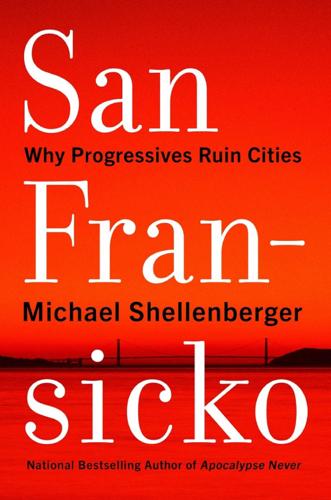
San Fransicko: Why Progressives Ruin Cities
by
Michael Shellenberger
Published 11 Oct 2021
In the same fifteen-year period, the homeless populations of Chicago, Greater Miami, and Greater Atlanta declined 19 percent, 32 percent, and 43 percent, respectively.29 While it is true that New York City saw an increase of 62 percent in its homeless population between 2005 and 2020, over 99 percent of New York’s homeless have access to shelter. In San Francisco, just 43 percent do.30 Against Benioff’s suggestion that San Francisco’s homeless population is heavily comprised of families with children, the research finds that far more homeless in the San Francisco Bay Area are adults without families than in other parts of the United States. Whereas families make up 32, 53, and 65 percent of the homeless in New York City, Chicago, and Boston, they make up just 9 percent of the Bay Area’s homeless population.31 San Francisco has a much higher share of unsheltered homeless who are “chronically homeless” than other cities.
…
The US Department of Housing and Urban Development (HUD) defines chronically homeless as those who have been homeless for a year, had four episodes of homelessness totaling twelve months in the last three years, or those who are too disabled to work.32 Of the roughly 5,200 unsheltered homeless people in San Francisco, 37 percent in 2020 were chronically homeless, in comparison to the 34 percent, 19 percent, 17 percent, and 16 percent chronically homeless in New York City, Greater Phoenix, Greater San Diego, and Boston, respectively.33 San Francisco’s mild climate alone cannot explain why it has more homeless people than other cities. Miami, Phoenix, and Houston have year-round warm weather and far fewer homeless than San Francisco per capita. Per capita homelessness in San Francisco, Greater Miami, Greater Phoenix, and Greater Houston in 2020 was 9.3, 1.3, 1.6, and 0.8 per 1,000 residents, respectively.
…
Anthony’s, which allowed me to use all of my General Assistance money for heroin and then sell my food stamp card to a merchant in Chinatown who would pay me 60 cents on the dollar for it.” According to a 2019 survey conducted by the homeless advocacy group Tipping Point, just one-fifth of San Francisco’s homeless said they were born in the city and only half had lived in the city for over ten years. In a different survey, nearly one-third of San Francisco’s homeless said they were homeless before coming to San Francisco. And among the 70 percent who said they became homeless after moving to San Francisco, we don’t know how long many of them had lived in the city. For some, it could have been as brief as a month, which is the time it takes to become eligible for General Assistance.15 Helping the neediest can create perverse incentives.

City for Sale: The Transformation of San Francisco
by
Chester W. Hartman
and
Sarah Carnochan
Published 15 Feb 2002
Rachel Gordon, “Board Votes Down Alioto Amnesty for Homeless,” San Francisco Examiner, 26 October 1993. 170. Ibid. 171. Sharon Waxman, “Keeping Focus on Homeless,” Washington Post, 17 July 1996. 172. Quoted in Bill Mandel, “The City’s Changing Image,” San Francisco Examiner, 28 March 1983. 173. Evelyn Nieves, “Homelessness Tests San Francisco’s Ideals,” New York Times, 13 November 1998. Notes to Pages 381–385 / 461 174. Kathleen Sullivan, “Homeless Say Shelters Lack Basic Amenities,” San Francisco Examiner, 6 October 2000. 175. Carey Goldberg, “Homeless in San Francisco: A New Policy,” New York Times, 20 May 1996. 176.
…
McHenry, Food Not Bombs: How to Feed the Hungry and Build Community (Philadelphia: New Society Publishers, 1992); also, Jesse Drew, “Any Vegetable: The Politics of Food in San Francisco,” in Reclaiming San Francisco, ed. James Brook, Chris Carlsson, and Nancy J. Peters, 317 –31. 164. Andrew Ross and Andy Furillo, “Poll: Homeless S.F.’s No. 1 Problem,” San Francisco Examiner, 7 January 1990. 165. See Edward Lempinen, “Society’s Haves Getting Weary of Have-Nots,” San Francisco Chronicle, 31 October 1988; Andy Furillo, “Homeless Face Growing Hostility in Nation’s Cities,” San Francisco Examiner, 15 July 1990. 166. Ingfei Chen, “Jordan Recommends Tightening Up on Homeless,” San Francisco Chronicle, 10 July 1991. 167. Christine Spolar, “San Francisco’s New Urban Outlaws Carry Bedrolls and Sleep Outdoors,” San Francisco Chronicle, 24 November 1993. 168.
…
Housing Crisis and Housing Movement / 383 It’s clear that “compassion fatigue” had set in, as captured in headlines about San Francisco from national news accounts: “City of Tolerance Tires of Homeless,”185 “Homelessness Tests San Francisco’s Ideals.”186 And that— at least from city hall’s biased and jaundiced perspective—“Willie Brown has become the third mayor of San Francisco in a row to enter office with a plan for dealing with the homeless only to discover that nothing works.”187 As Paul Boden of the city’s Coalition on Homelessness observes about San Francisco’s political climate: “There is an attitude that with unemployment at record lows, with the stock market at record highs, if you’re poor, it’s your own damn fault.
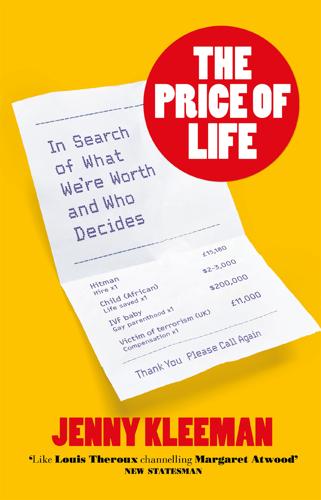
The Price of Life: In Search of What We're Worth and Who Decides
by
Jenny Kleeman
Published 13 Mar 2024
sh=1e557ffb4e09 around $10 billion a year The Chronicle of Philanthropy, ‘A list of America’s top 50 donors of 2020’, AP News (10 February 2021). https://apnews.com/article/technology-amazoncom-inc-michael-bloomberg-jeff-bezos-philanthropy-43ff7817a0c8b7babfd2ab9bb67d3b5e $1 billion a year ‘We aim to cost-effectively direct around $1 billion annually by 2025’, GiveWell (22 November 2021). https://blog.givewell.org/2021/11/22/we-aim-to-cost-effectively-direct-around-1-billion-annually-by-2025/ $2,000–3,000 per life saved You can see their working for this here: https://docs.google.com/spreadsheets/d/1CuIwrlm OchJMRojhKLiuitDXTnT0XJQVs0qAdX6Hi4E/edit#gid=1350747058 anywhere else in the US Fortson, Danny, ‘American nightmare: the homelessness crisis in San Francisco’, The Times (29 August 2021). https://www.thetimes.co.uk/article/san-francisco-homelessness-crisis-tent-cities-bclgk20s5 chronic medical conditions Hepler, Lauren and Knight, Heather, ‘S.F. homeless deaths more than doubled during the pandemic’s first year ‒ but not because of COVID’, San Francisco Chronicle (10 March 2022). https://www.sfchronicle.com/sf/article/San-Francisco-homeless-deaths-more-than-doubled-16990683.php ‘More permissive policy’ ‘We seek to reduce the harms caused by excessively restrictive local land use regulations’, Open Philanthropy. https://www.openphilanthropy.org/focus/land-use-reform/ $26.5 billion ‘Sam Bankman-Fried’, Forbes. https://www.forbes.com/profile/sam-bankman-fried/?
…
Meanwhile, GiveWell focuses only on Africa, where dollars go furthest.* Saving the lives of the manifestly desperate in front of their noses in the Bay Area would be ineffective altruism. San Francisco homeless tents under the freeway (courtesy of Shannon Badiee). ‘You have these really intense visuals of massive wealth right alongside quite destitute people living in the shadows of that affluence,’ Jennifer Friedenbach tells me. She’s worked for San Francisco’s Coalition on Homelessness for the last twenty-eight years, in a brightly painted office building less than ten minutes away from OpenPhil. ‘The lifespan of unhoused people is generally around twenty-five years shorter than someone who’s housed.
…
I appreciate that it takes a certain kind of moral courage to be dispassionate enough to have these conversations. Is it a good kind of courage? Can you save more of humanity if you’re prepared to have them? Or does this way of thinking require you to deny your own humanity? San Francisco has both more millionaires and more homeless people per square mile than anywhere else in the US. The homeless are far more visible. I walk away from the philanthropic foundation belonging to San Francisco’s richest resident, and within minutes I’m on streets lined with weathered tents, frayed tarpaulins, shopping trolleys, knots of black bin bags, blankets and sleeping bags left out in the elements.
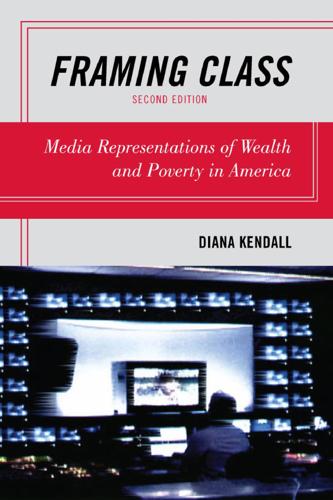
Framing Class: Media Representations of Wealth and Poverty in America
by
Diana Elizabeth Kendall
Published 27 Jul 2005
Daily Papers Pit Middle Class against Homeless,” Media Alliance, 2000, http://www.media-alliance.org/mediafile/19-1/homeless.html (accessed October 12, 2003). 136. “Homeless Shelter Plan Attacked, Potrero Hill Neighbors Worry about Property Values,” San Francisco Chronicle, August 6, 1999, http://articles.sfgate. com/1999-08-06/news/17696660_1_homeless-shelter-neighborhood-homeless-people (accessed October 15, 2010). 137. “Showdown over Shelter: A Gritty Little Neighborhood Fights S.F. Plan for Homeless,” San Francisco Examiner, August 12, 1999. 138. John W. Fountain, “Chicago Looks for Home for Shelter for Homeless,” New York Times, May 15, 2003, A26. 139.
…
vii 9781442202238.print.indb vii 2/10/11 10:46 AM 9781442202238.print.indb viii 2/10/11 10:46 AM Chapter 1 Class Action in the Media San Francisco, California: They live—and die—on a traffic island in the middle of a busy downtown street, surviving by panhandling drivers or turning tricks. Everyone in their colony is hooked on drugs or alcohol. They are the harsh face of the homeless in San Francisco. The traffic island where these homeless people live is a 40-by-75 foot triangle chunk of concrete just west of San Francisco’s downtown. . . . The little concrete divider wouldn’t get a second glance, or have a name—if not for the colony that lives there in a jumble of shopping carts loaded with everything they own.
…
Government agencies (city, state, federal) don’t want to pick up the care for the homeless because it costs money so they look the other way when services used by the middle class collapse under the weight. Why shouldn’t the needs of the middle class be considered alongside the needs of the homeless?133 Headlines regarding the homeless and libraries crop up across the country. For example, a San Francisco newspaper reports that John Banks, a homeless man in a wheelchair, shows up at the main library every day when it opens and stays there until it closes, at which time, he returns to the bus terminal where he spends the night.134 As discussed in chapter 4, some journalists frame stories in a manner that engenders sympathy for the poor and homeless, asking, for instance, where a person like John Banks is supposed to stay.

The Lonely Century: How Isolation Imperils Our Future
by
Noreena Hertz
Published 13 May 2020
The city itself is responsible for other instances of hostile architecture, from ‘inverse guillotines’ at the entrance to public transit (Lina Blanco, ‘BART’s Fare Evasion Crackdown Exposes the ‘Deadly Elegance’ of Hostile Design’, KQED, 23 July 2019, https://www.kqed.org/arts/13861966/barts-fare-evasion-crackdown-exposes-the-deadly-elegance-of-hostile-design) to sharp boulders outside the public library to paint in public places that will spray urine back at homeless people who may not have access to a suitable toilet (Kaitlin Jock, ‘You are not welcome here: Anti-homeless architecture crops up nationwide’, Street Roots News, 7 June 2019, https://news.streetroots.org/2019/06/07/you-are-not-welcome-here-anti-homeless-architecture-crops-nationwide). While it does not have the highest total number of people experiencing homelessness, San Francisco has one of the fastest growing homeless populations in the US, having risen a shocking 30% just between 2017 and 2018, by one measure (Jill Cowan, ‘San Francisco’s Homeless Population Is Much Bigger Than Thought, City Data Suggests’, New York Times, 19 November 2019, https://www.nytimes.com/2019/11/19/us/san-francisco-homeless-count.html). 24 James Walker, ‘Invisible in plain sight: fighting loneliness in the homeless community’, Open Democracy, 31 July 2019, https://www.opendemocracy.net/en/opendemocracyuk/invisible-plain-sight-fighting-loneliness-homeless-community/. 25 See Jane Jacobs, The Death and Life of Great American Cities (Random House, 1961). 26 ‘Welcome to the neighbourhood’, Royal Wharf, https://www.royalwharf.com/neighbourhood/. 27 Robert Booth, ‘Subsidised tenants are excluded from pool and gym in London block’, Guardian, 1 November 2018, https://www.theguardian.com/society/2018/nov/01/subsidised-tenants-are-excluded-from-pool-and-gym-in-london-tower. 28 Harriet Grant, ‘Too poor to play: children in social housing blocked from communal playground’, Guardian, 25 March 2019, https://www.theguardian.com/cities/2019/mar/25/too-poor-to-play-children-in-social-housing-blocked-from-communal-playground. 29 The company, for its part, claims that such exclusion was never its policy. 30 Harriet Grant, ‘Disabled children among social tenants blocked from communal gardens’, Guardian, 27 September 2019, https://www.theguardian.com/cities/2019/sep/27/disabled-children-among-social-tenants-blocked-from-communal-gardens. 31 ‘New UWS development could have separate entrance for poorer people’, West Side Rag, 12 August 2013, https://www.westsiderag.com/2013/08/12/new-uws-development-could-have-separate-entrance-for-poorer-people; Adam Withnall ‘“Poor door” controversy extends to Washington DC as affordable housing “wing” given entrance on different street – next to the loading bay’, Independent, 4 August 2014, https://www.independent.co.uk/news/world/americas/poor-door-controversy-extends-to-washington-dc-as-affordable-housing-wing-given-entrance-on-9646069.html; Hilary Osborne, ‘Poor doors: the segregation of London’s inner–city flat dwellers’, Guardian, 25 July 2014, https://www.theguardian.com/society/2014/jul/25/poor-doors-segregation-london-flats. 32 Adam Withnall, ‘“Poor door” controversy extends to Washington, D.C. as affordable housing “wing” given entrance on different street – next to the loading bay’; New York has now closed the loophole that allowed buildings with separate entrances to qualify for the ‘inclusionary housing’ tax break.
…
, Chicago Tribune, 11 Jan 2019, https://www.chicagotribune.com/opinion/commentary/ct-perspec-compassion-democrats-republicans-who-has-more-0113-story.html. 23 In one striking example of this dissonance, residents of the Mission Dolores neighbourhood actually paid out of their own pockets for huge sidewalk boulders to prevent homeless people from sleeping on their sidewalks (‘Boulders placed on San Francisco sidewalk to keep homeless residents away’, KTVU FOX 2, 30 September 2019, https://www.ktvu.com/news/boulders-placed-on-san-francisco-sidewalk-to-keep-homeless-residents-away). Others have campaigned against homeless shelters in their areas, sparking a legal battle that has dragged on for over eighteen months (Trisha Thadani, ‘SF residents vow to keep fighting Navigation Center as supes weigh its fate’, San Francisco Chronicle, 24 June 2019, https://www.sfchronicle.com/politics/article/Fate-of-controversial-Navigation-Center-now-in-14037517.php).
…
In Accra, Ghana, massive stones have been placed under bridges to prevent the homeless finding shelter; in Seattle, gleaming bike racks were installed to block a flat, sheltered area previously used by rough sleepers, a move the municipal government later admitted was not inspired out of care for cyclists but, instead, was ‘part of the homelessness emergency response effort’, made ‘to prevent the area from being re-camped’.6 In Hong Kong, where the homeless population has tripled since 2004, public spaces were deliberately designed with barely any seating in order to repel loiterers and the homeless alike.7 Perhaps most nefariously, in San Francisco in 2015 the Cathedral of St Mary’s took the very unchristian step of installing a sprinkler system that doused rough sleepers in its entryways (unsurprisingly, to massive public outcry).8 Hostile architecture is not limited to anti-homeless strategies. In Philadelphia and in twenty other US metropolitan areas, street lights outside recreation centres are fitted with small devices, aptly named Mosquitoes, which emit an unpleasant high-pitched sound that can be heard only by young people, as the frequencies are no longer audible to their elders (this is due to a process called presbycusis, in which certain ear cells die off over time).9 The goal of these Mosquito devices is, according to the president of the company that makes them, to ‘ward off’ unruly, ‘loitering’ teenagers while conveniently keeping areas pleasant for adults.10 It’s for similar reasons that pink lights designed to highlight uneven skin and acne have been installed in public places around the UK – an ‘anti-loitering strategy’ designed with the hope that vain teenagers will disperse once their pimples and blemishes are exposed.11 According to one Nottingham resident who was at first ‘dubious’ of the concept, ‘it’s done the trick’.12 Although one can argue that hostile architecture is not a new phenomenon – think of moats around castles and ancient cities’ defensive walls – its modern incarnation has its roots in the ‘broken windows’ policing of the 1980s US, when everyday activities such as standing, waiting and sleeping (especially when ‘committed’ by people of colour) began to be criminalised as ‘disorderly’ and ‘antisocial’.13 Preventing these behaviours, the logic went, would make a space more ‘orderly’ and, in convincing locals to ‘claim their public spaces’, would also prevent crime.14 Hence, hanging out became ‘loitering’, sleeping on the street became ‘improper lodging’, dawdling became ‘loafing’, people-watching became ‘lurking’.15 The fact that the broken-windows theory has been revealed to be highly flawed – responsible for the over-policing of minorities16 and an ineffective deterrent for more serious crimes – has not stopped many cities from continuing to rely on its strategies.17 The result is that over the past fifteen years, cities around the globe are increasingly sprouting spikes.
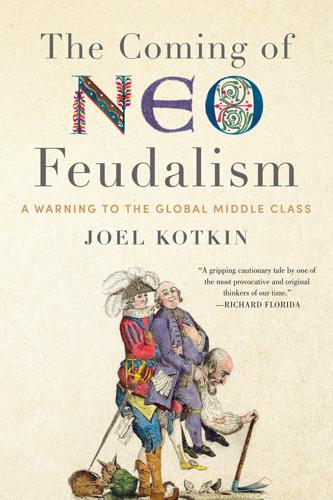
The Coming of Neo-Feudalism: A Warning to the Global Middle Class
by
Joel Kotkin
Published 11 May 2020
ex_cid=SigDig. 25 Francesco Andreoli and Eugenio Peluso, “So close yet so unequal: Reconsidering spatial inequality in U.S. cities,” Dipartimento di Economia e Finanza, February 2017, https://dipartimenti.unicatt.it/economia-finanza-def055.pdf. 26 Rakesh Kochhar, “The American middle class is stable in size, but losing ground financially to upper-income families,” Pew Research Center, September 6, 2018, https://www.pewresearch.org/fact-tank/2018/09/06/the-american-middle-class-is-stable-in-size-but-losing-ground-financially-to-upper-income-families/; Wendell Cox, “2018 COU Standard of Living Index,” Center for Opportunity Urbanism, December 2018, https://opportunityurbanism.org/wp-content/uploads/2018/12/2018-COU-Standard-of-Living-Index.pdf. 27 Nathaniel Baum-Snow and Ronni Pavan, “Inequality and City Size,” Review of Economics and Statistics, vol. 95:5 (December 2013), 1535–48; https://www.ncbi.nlm.nih.gov/pmc/articles/PMC4063360/; Enrico Moretti, “America’s Great Divergence,” Salon, May 20, 2012, https://www.salon.com/2012/05/20/america_resegregated/; James Parrott, “As Income Gap Widens, New York Grows Apart,” Gotham Gazette, January 18, 2011, http://www.gothamgazette.com/index.php/economy/683-as-incomes-gap-widens-new-york-grows-apart. 28 Amy Liu, “The Urgency to Achieve an Inclusive Economy in the Bay Area,” Brookings, June 7, 2018, https://www.brookings.edu/research/the-urgency-to-achieve-an-inclusive-economy-in-the-bay-area/. 29 Thomas Fuller, “San Francisco’s Homeless Crisis Tests Mayoral Candidates’ Liberal Ideals,” New York Times, May 30, 2018, https://www.nytimes.com/2018/05/30/us/san-francisco-mayoral-election-homeless.html; Bigad Shaban, “Survey of Downtown San Francisco Reveals Trash on Every Block, 303 Piles of Feces and 100 Drug Needles,” NBC Bay Area, February 2, 2018, https://www.nbcbayarea.com/news/local/Diseased-Streets-472430013.html; Alexis C.
…
Susan Shelley, “In California, a poor imitation of economic growth,” Los Angeles Daily News, January 27, 2017, https://www.dailynews.com/2017/01/27/in-california-a-poor-imitation-of-economic-growth-susan-shelley/. 22 Joel Kotkin, “California Preening,” City Journal, December 20, 2019, https://www.city-journal.org/california-high-tech-feudalism. 23 Marisa Kendall, “Buying a Bay Area home now a struggle even for Apple, Google engineers,” Mercury News, February 15, 2018, https://www.mercurynews.com/2018/02/14/buying-a-bay-area-home-now-a-struggle-even-for-apple-google-engineers/. 24 Amy Graff, “$303K is the annual income needed to buy a median priced home in San Francisco,” SFGate, February 15, 2018, https://www.sfgate.com/realestate/article/income-needed-buy-home-San-Francisco-real-estate-12614111.php; Alan Berube, “All Cities Are Not Created Unequal,” Brookings, February 20, 2014, https://www.brookings.edu/research/all-cities-are-not-created-unequal/; Frederick Kuo, “San Francisco has become one huge metaphor for economic inequality in America,” Quartz, June 21, 2016, https://qz.com/711854/the-inequality-happening-now-in-san-francisco-will-impact-america-for-generations-to-come/. 25 Luke Redenbach et al., “The Growth of Top Incomes Across California,” California Budget and Policy Center, February 2016, https://calbudgetcenter.org/wp-content/uploads/The-Growth-of-Top-Incomes-Across-California-02172016.pdf; Chris Roberts, “How California’s Homeless Crisis Grew Obscenely Out of Control,” Observer, May 30, 2019, https://observer.com/2019/05/california-homeless-crisis-san-francisco/. 26 Amy Graff, “San Francisco metro area has lost 31,000 home-owning families in 10 years,” SFGate, July 13, 2018, https://www.sfgate.com/mommyiles/article/San-Francisco-low-percentage-families-homeowners-13069287.php; Megan Cassidy and Sarah Ravani, “San Francisco ranks No. 1 in US in property crime,” San Francisco Chronicle, October 2, 2018, https://www.sfchronicle.com/crime/article/The-Scanner-San-Francisco-ranks-No-1-in-13267113.php?psid=bwGGn; Aria Bendix, “San Francisco’s homelessness crisis is so bad, people appear to be using poop to graffiti the sidewalks,” SFGate, November 20, 2018, https://www.sfgate.com/technology/businessinsider/article/Meet-the-guy-in-charge-of-tackling-San-8331836.php. 27 Chris Brenner and Manuel Pastor, Equity, Growth, and Community: What the Nation Can Learn from America’s Metro Areas (Oakland: University of California Press, 2015), 167. 28 Rachel Massaro, “Silicon Valley Index,” Joint Venture, 2016, https://jointventure.org/images/stories/pdf; Dylan Wittenberg, “These Bay Area FinTech Companies Are Revolutionizing the Lending Space,” Benzinga, July 25, 2017, https://www.benzinga.com/fintech/17/07/9816489/these-bay-area-fintech-companies-are-revolutionizing-the-lending-space/index2016.pdf. 29 Issie Lapowsky, “Silicon Valley’s Biggest Worry Should Be Inequality, Not a Bubble,” Wired, February 4, 2015, https://www.wired.com/2015/02/silicon-valley-inequality-study/. 30 Gabriel Metcalf, “Four Future Scenarios for the San Francisco Bay Area,” SPUR Regional Strategy, August 2018, https://www.spur.org/sites/default/files/publications_pdfs/SPUR_Future_Scenarios_for_the_SF_Bay_Area.pdf; Alex Thomas, “The Demographics of Poverty in Santa Clara County,” New Geography, January 10, 2017, https://www.newgeography.com/content/005501-the-demographics-poverty-santa-clara-county; Jeff Desjardins, “Which Companies Make the Most Revenue Per Employee?”
…
Wages and job opportunities soared in the affluent, predominantly white precincts but dropped in the minority-dominated areas.28 Hugely inflated housing prices have chased many working-class and even middle-class people away to locations hours distant. Increasing numbers of residents sleep on friends’ couches, in their cars, or to a shameful extent in homeless encampments. San Francisco also suffers the highest rate of property crime per capita of any city in the United States.29 These patterns extend to other parts of the Bay Area, particularly in Silicon Valley. More than half of the Bay Area’s lower-income communities are in danger of mass displacement, according to a UC Berkeley study.30 Gated Cities: A Global Perspective Similar patterns can be seen in big cities around the world.

The Internet Is Not the Answer
by
Andrew Keen
Published 5 Jan 2015
Class Warfare These alien overlords certainly don’t have much sympathy for the city’s poor and homeless. “San Francisco has some of the craziest homeless people I have ever seen in my life. Stop giving them money, you know they just buy alcohol and drugs with it, right? Next time just hand them a handle of vodka and a pack of cigarettes,” one founder of an Internet startup wrote in a notorious post titled “10 Things I Hate About You: San Francisco Edition.”56 Another tech founder and CEO was even more blunt, calling San Francisco’s homeless “grotesque . . . degenerate . . . trash.”57 Equally disturbing are the technorati’s solutions to the poverty and hunger afflicting many Bay Area residents.
…
It encapsulates what the New York Times’ Timothy Egan describes as the “dystopia by the Bay”—a San Francisco that is “a one-dimensional town for the 1 percent” and “an allegory of how the rich have changed America for the worse.”10 The Birches’ one-dimensional club is a 58,000-square-foot allegory for the increasingly sharp economic inequities in San Francisco. But there’s an even bigger issue at stake here than the invisible wall in San Francisco separating the few “haves” from the many “have-nots,” including the city’s more than five thousand homeless people. The Battery may be San Francisco’s biggest experiment, but there’s a much bolder social and economic experiment going on in the world outside the club’s tinted windows. This experiment is the creation of a networked society. “The most significant revolution of the 21st century so far is not political. It is the information technology revolution,” explains the Cambridge University political scientist David Runciman.11 We are the brink of a foreign land—a data-saturated place that the British writer John Lanchester calls a “new kind of human society.”12 “The single most important trend in the world today is the fact that globalization and the information technology revolution have gone to a whole new level,” adds the New York Times columnist Thomas Friedman.
…
The George Mason University economist Tyler Cowen, in his 2013 book, Average Is Over, concurs, arguing that today’s big economic “divide” is between those whose skills “complement the computer” and those whose don’t. Cowan underlines the “stunning truth” that wages for men, over the last forty years, have fallen by 28%.78 He describes the divide in what he calls this new “hyper-meritocracy” as being between “billionaires” like the Battery member Sean Parker and the homeless “beggars” on the streets of San Francisco, and sees an economy in which “10 to 15 percent of the citizenry is extremely wealthy and has fantastically comfortable and stimulating lives.”79 Supporting many of Frank and Cook’s theses in their Winner-Take-All Society, Cowen suggests that the network lends itself to a superstar economy of “charismatic” teachers, lawyers, doctors, and other “prodigies” who will have feudal retinues of followers working for them.80 But, Cowen reassures us, there will be lots of jobs for “maids, chauffeurs and gardeners” who can “serve” wealthy entrepreneurs like his fellow chess enthusiast Peter Thiel.
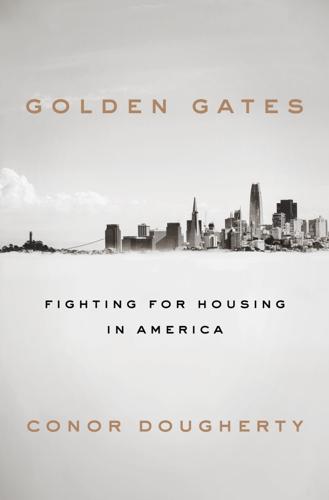
Golden Gates: Fighting for Housing in America
by
Conor Dougherty
Published 18 Feb 2020
about $22 million: “California Proposition 10, Local Rent Control Initiative (2018),” Ballotpedia, https://ballotpedia.org/California_Proposition_10,_Local_Rent_Control_Initiative_(2018). big homeless tax: “San Francisco, California, Proposition C, Gross Receipts Tax for Homeless Services (November 2018),” Ballotpedia, https://ballotpedia.org/San_Francisco,_California,_Proposition_C,_Gross_Receipts_Tax_for_Homelessness_Services_(November_2018). The total tab: “California Proposition 10, Local Rent Control Initiative (2018).” YIMBY-supported measures: J. K. Dineen, “Housing, by Any Means Necessary,” San Francisco Chronicle, November 1, 2018, www.sfchronicle.com/politics/article/How-powerful-is-Bay-Area-s-pro-housing-13352047.php?
…
In 2016, Los Angeles voters overwhelmingly passed a $1.2 billion bond measure to build ten thousand supportive housing units—apartments with on-site counseling and other services—for formerly homeless people. Then came the 2017 housing package, with its $4 billion affordable housing bond. Homeless activists in San Francisco started preparing a ballot measure that would tax big companies to double homeless spending in the city, and there would be more city and county housing bonds and more state homeless funding, all coming in the offing. Together it amounted to a broad and statewide acknowledgment that the bargain apartments of the past had to be replenished if homelessness was ever going to be solved, and that the feds weren’t coming, so it was up to state and local governments to mend the nation’s worn and tattered safety net.
…
The best you could say about what the legislature had accomplished was that they had shown the public and themselves that the appetite for action was there, and that there was probably appetite for more. The next year would be dedicated to finding out how much more. Scott Wiener would introduce a bill to essentially rezone California. There would be a statewide ballot measure to radically expand local rent control laws. San Francisco homeless advocates would push a big new tax on companies with more than $50 million in annual revenue to build more supportive and affordable housing. All the while Gavin Newsom, the ex-mayor of San Francisco, would cakewalk his way to replacing Jerry Brown as governor and campaign on a promise to more than triple the state’s pace of homebuilding.
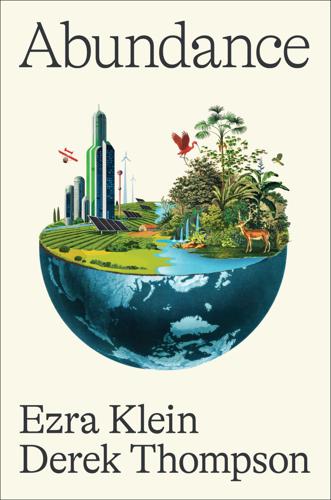
Abundance
by
Ezra Klein
and
Derek Thompson
Published 18 Mar 2025
Margot Kushel and Tiana Moore, “Toward a New Understanding: The California Statewide Study of People Experiencing Homelessness,” University of California–San Francisco, Benioff Homelessness and Housing Initiative, June 2023, https://homelessness.ucsf.edu/our-impact/studies/california-statewide-study-people-experiencing-homelessness. 44. Heather Mac Donald, “San Francisco, Hostage to the Homeless,” City Journal, Autumn 2019, https://www.city-journal.org/article/san-francisco-hostage-to-the-homeless. 45. Gregg Colburn and Clayton Page Aldern, Homelessness Is a Housing Problem: How Structural Factors Explain U.S.
…
Since 2015, the state has authorized construction on about half as many housing units as Texas, despite it now having 9 million more residents.42 California has about 12 percent of the nation’s population, 30 percent of the nation’s homeless population, and about 50 percent of its unsheltered homeless population.43 To walk the streets of the Tenderloin in San Francisco or Skid Row in Los Angeles is to tumble into the dystopia tucked amid the plenty of these cities. Tents line the buildings, feces line the sidewalks, needles crunch underfoot. This is not what anyone trying to preserve the idyllic conditions of California’s central coast wanted.
…
Tipping Point, “Charles and Helen Schwab Invest $65M in Groundbreaking Homelessness Solutions in SF,” October 21, 2020, https://tippingpoint.org/press/press-releases/charles-and-helen-schwab-invest-65m-in-groundbreaking-homelessness-solutions-in-sf/; Maria Di Mento, “Billionaire Charles Schwab Gives $65 Million to House the Homeless,” Chronicle of Philanthropy, October 26, 2020, https://www.philanthropy.com/article/billionaire-charles-schwab-gives-65-million-to-house-the-homeless; J. K. Dineen, “Schwabs Donate $65 Million to Build Housing for Homeless in S.F.,” San Francisco Chronicle, October 22, 2020, https://www.sfchronicle.com/bayarea/article/Schwabs-donate-65-million-to-build-housing-for-15665785.php. 9. Krutika Amin, Imani Telesford, Rakesh Singh, and Cynthia Cox, “How Do Prices of Drugs for Weight Loss in the U.S. Compare to Peer Nations’ Prices?

Stakeholder Capitalism: A Global Economy That Works for Progress, People and Planet
by
Klaus Schwab
Published 7 Jan 2021
January 2016, https://www.inc.com/bill-murphy-jr/9-words-to-live-by-its-always-better-to-beg-forgiveness-than-ask-permission.html 19 “Competition Is for Losers,” Peter Thiel, Wall Street Journal, September 2014, https://www.wsj.com/articles/peter-thiel-competition-is-for-losers-1410535536. 20 “Antitrust Procedures in Abuse of Dominance,” European Commission, August 2013, https://ec.europa.eu/competition/antitrust/procedures_102_en.html. 21 “If You Want to Know What a US Tech Crackdown May Look Like, Check Out What Europe Did,” Elizabeth Schulze, CNBC, June 2019, https://www.cnbc.com/2019/06/07/how-google-facebook-amazon-and-apple-faced-eu-tech-antitrust-rules.html. 22 “Why San Francisco's Homeless Population Keeps Increasing,” Associated Press, May 2019, https://www.marketwatch.com/story/the-homeless-population-in-san-francisco-is-skyrocketing-2019-05-17. 23 “A Decade of Homelessness: Thousands in S.F. Remain in Crisis,” Heather Knight, San Francisco Chronicle, 2014, https://www.sfchronicle.com/archive/item/A-decade-of-homelessness-Thousands-in-S-F-30431.php. 24 Trailblazer, Marc Benioff, October 2019, pp. 12–13. 25 “Marc Benioff Says Companies Buy Each Other for the Data, and the Government Isn't Doing Anything about It,” April Glaser, Recode., November 2016, https://www.vox.com/2016/11/15/13631938/benioff-salesforce-data-government-federal-trade-commission-ftc-linkedin-microsoft. 26 Trailblazer, Marc Benioff, October 2019, pp. 12–13. 27 “You Deserve Privacy Online.
…
Some observers, such as writer Douglas Rushkoff, who wrote Throwing Rocks at the Google Bus: How Growth Became the Enemy of Prosperity, realized it was just one of many signs that Big Tech's effect was to widen the divides between haves and have-nots and that if left unchecked, the situation would worsen. Others simply saw right past the issue. Even as homelessness in one of wealthiest cities in America was getting out of hand, there was no realization by most entrepreneurs that they could or should do anything about it. By 2019, San Francisco county had over 8,000 homeless people, up 17 percent from two years earlier,22 and a far cry from the city's 2004 ambition to end homelessness in a decade.23 This was the kind of civic slight that businesspeople like Benioff's father might have tackled head on. But when calls were made for the city's tech community to chip in, most responded with silence.
…
First, realizing that Silicon Valley, including his company, had a diversity problem, Benioff brought in an outside advisory firm to review the company's salaries and HR practices. It revealed a gender pay gap at Salesforce and led management to adjust the contracts of those paid less for similar work. And second, as he was confronted with the reality of homelessness in San Francisco, the city that he and his family had grown up in, Benioff decided to speak out in favor of a tax on large tech companies such as his own, which could help finance a structural solution for the homeless in the city. Proposition C, as the initiative was called, proposed a 0.5 percent tax on corporate revenue above $50 million29 for companies headquartered in the city.
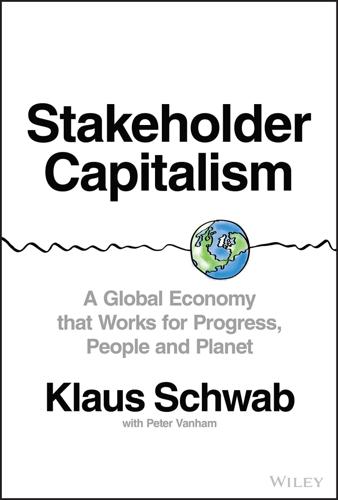
Stakeholder Capitalism: A Global Economy That Works for Progress, People and Planet
by
Klaus Schwab
and
Peter Vanham
Published 27 Jan 2021
January 2016, https://www.inc.com/bill-murphy-jr/9-words-to-live-by-its-always-better-to-beg-forgiveness-than-ask-permission.html 19 “Competition Is for Losers,” Peter Thiel, Wall Street Journal, September 2014, https://www.wsj.com/articles/peter-thiel-competition-is-for-losers-1410535536. 20 “Antitrust Procedures in Abuse of Dominance,” European Commission, August 2013, https://ec.europa.eu/competition/antitrust/procedures_102_en.html. 21 “If You Want to Know What a US Tech Crackdown May Look Like, Check Out What Europe Did,” Elizabeth Schulze, CNBC, June 2019, https://www.cnbc.com/2019/06/07/how-google-facebook-amazon-and-apple-faced-eu-tech-antitrust-rules.html. 22 “Why San Francisco's Homeless Population Keeps Increasing,” Associated Press, May 2019, https://www.marketwatch.com/story/the-homeless-population-in-san-francisco-is-skyrocketing-2019-05-17. 23 “A Decade of Homelessness: Thousands in S.F. Remain in Crisis,” Heather Knight, San Francisco Chronicle, 2014, https://www.sfchronicle.com/archive/item/A-decade-of-homelessness-Thousands-in-S-F-30431.php. 24 Trailblazer, Marc Benioff, October 2019, pp. 12–13. 25 “Marc Benioff Says Companies Buy Each Other for the Data, and the Government Isn't Doing Anything about It,” April Glaser, Recode., November 2016, https://www.vox.com/2016/11/15/13631938/benioff-salesforce-data-government-federal-trade-commission-ftc-linkedin-microsoft. 26 Trailblazer, Marc Benioff, October 2019, pp. 12–13. 27 “You Deserve Privacy Online.
…
Some observers, such as writer Douglas Rushkoff, who wrote Throwing Rocks at the Google Bus: How Growth Became the Enemy of Prosperity, realized it was just one of many signs that Big Tech's effect was to widen the divides between haves and have-nots and that if left unchecked, the situation would worsen. Others simply saw right past the issue. Even as homelessness in one of wealthiest cities in America was getting out of hand, there was no realization by most entrepreneurs that they could or should do anything about it. By 2019, San Francisco county had over 8,000 homeless people, up 17 percent from two years earlier,22 and a far cry from the city's 2004 ambition to end homelessness in a decade.23 This was the kind of civic slight that businesspeople like Benioff's father might have tackled head on. But when calls were made for the city's tech community to chip in, most responded with silence.
…
First, realizing that Silicon Valley, including his company, had a diversity problem, Benioff brought in an outside advisory firm to review the company's salaries and HR practices. It revealed a gender pay gap at Salesforce and led management to adjust the contracts of those paid less for similar work. And second, as he was confronted with the reality of homelessness in San Francisco, the city that he and his family had grown up in, Benioff decided to speak out in favor of a tax on large tech companies such as his own, which could help finance a structural solution for the homeless in the city. Proposition C, as the initiative was called, proposed a 0.5 percent tax on corporate revenue above $50 million29 for companies headquartered in the city.

Silicon City: San Francisco in the Long Shadow of the Valley
by
Cary McClelland
Published 8 Oct 2018
And when we really clarified the term “underserved homeless youth,” it was like a light went on: Holy shit. The black kids are exactly who we need to reach. Because no one was prioritizing them. And over time, that resolve has grown even stronger. A, these kids aren’t being identified by the city, by service providers, by anyone—and, B, most of them do not identify as homeless. When people in San Francisco think of homeless youth, they think of dirty white kids. Kids who actively reject the system, who project themselves as anarchists, “Man, the system fucked me, so fuck the system.” And black kids are like, “No, no, I am not a Haight Street kid!” Very, very clearly that is not who they are.
…
It’s easy to turn a blind eye and say, “But look at San Francisco. It’s so beautiful.” But you judge a city not by how it treats those that are doing well. Let’s go into the hood, let’s go to Bayview, Hunters Point, let’s go to the Alemany Projects, let’s go to Double Rock. Why is it that we have twenty thousand homeless students attending schools in the San Francisco Unified School District? There’s an underworld that we’ve built, and that we continue to live in. So let’s walk down a path to a viable city. And that vision is only possible when the city cares for the people who maintain its foundations. That’s where the public sector comes in.
…
§ In June 2017, Travis Kalanick stepped down as CEO of Uber, forced out by investors after a series of scandals rocked the already controversial company. ¶ Tim got his initiative back on the ballot in 2018. This time, he is calling to break the state into three Californias, not six. PART IV THE BREAKDOWN Like any big American city, San Francisco has struggled with crime, with homelessness, with lagging public services. And as a region, the Bay Area got very good at sometimes hiding, even ignoring, those suffering most. The area has weathered a rise in crime, especially street crime, property crime, thefts, robberies. Homelessness has surged, and many wealthy suburbs are overcome by this problem for the first time.

The Passenger
by
AA.VV.
Published 23 May 2022
When examining this strange crisis of California – one that worsens in spite of losing increasing numbers of residents and which has failed to reduce inequality despite the state’s economic success – the lingering conclusion is that, beyond local specifics, the phenomenon has deeper roots. It is clear that ambitious interventions are required in order to keep California’s present from becoming a particularly brutal version of the future that awaits capitalism throughout the United States. A homeless encampment opposite San Francisco’s City Hall. With the surge in homelessness, city officials put aside an area for around fifty tents, properly distanced, with 24-hour monitoring and portable bathroom facilities, to help reduce the spread of Covid-19. Three Kids, Two Paychecks, No Home In Salinas, Monterey County, a fertile corner of California that produces much of the food consumed in the USA, soaring housing costs mean working families end up sleeping in shelters and parking lots.
…
Previously, no safety, health, or labor laws protected these workers, and they could be fired at will; now the farms—what Chavez proudly referred to as “liberated ranches”—were forced to provide better pay and working conditions for the men and women in their fields. The difficult daily lives of many homeless people in Salinas and San Francisco. “The perverse irony that ‘The Valley That Feeds the Nation,’ the title of a colorful mural in nearby Soledad, is now struggling to feed itself has been lost on nobody.” Today, the region’s 91,000 farmworkers live with stagnant wages (the median pay for farmworkers is $12.79 per hour) and the constant threat of the US Immigration and Customs Enforcement agency (ICE; the majority of these laborers are undocumented).
…
He added that many of those coming to his organization for support defy the stereotypes about homelessness; the vast majority of them are working and have simply been priced out of a place to live. Families are doubling and tripling up in overcrowded, substandard conditions; they’re resorting to garages and toolsheds, cars and abandoned properties. In Monterey County, approximately eight thousand schoolchildren were homeless in 2018, more than San Francisco and San Jose combined. For many of these kids, the safest, most dependable part of their lives is the school they attend. * When Brenda and Candido first got together in 2014, they were still under the impression that if they worked hard enough they would be able to provide for their family.
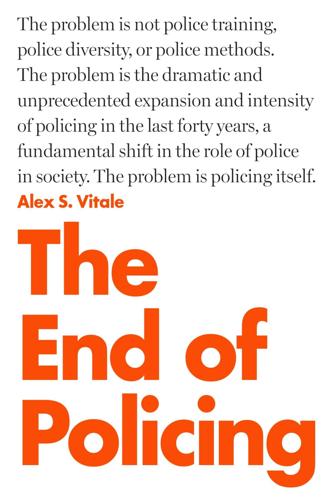
The End of Policing
by
Alex S. Vitale
Published 9 Oct 2017
Ellickson, “Controlling Chronic Misconduct in City Spaces: Of Panhandlers, Skid Rows, and Public Space Zoning,” Yale Law Journal 105, no. 5 (1996): 1165–1248; Maria Foscarinis, “Downward Spiral: Homelessness and Its Criminalization,” Yale Law and Policy Review 14, no. 1 (1996): 1–63. 16Kirk Johnson, “Property of a Homeless Man is Private, Hartford Court Says: Justices break new ground on the rights of the homeless,” New York Times, March 19, 1991; Bob Egelko, “Homeless have right to reclaim property,” San Francisco Chronicle, August 9, 2014; Gale Holland, “Seize a homeless person’s property? Not so fast, a federal judge tells L.A.,” Los Angeles Times, April 13, 2016. 17US Department of Justice, “Justice Department Files Brief to Address the Criminalization of Homelessness,” August 6, 2015. 18United States Interagency Council on Homelessness, Searching Out Solutions: Constructive Alternatives to the Criminalization of Homelessness (Washington, D.C.: United States Interagency Council on Homelessness, 2012). 19Bob Egelko, “U.N. panel denounces laws targeting homeless,” San Francisco Chronicle, May 2, 2014. 20Judicial Branch of Arizona Maricopa County, “Homeless Court,” n.d. 21National Low Income Housing Coalition, “Rental Inflation Drives Homelessness and Housing Instability for the Poor,” May 1, 2015. 22Virginia Housing Alliance, “Governor McAuliffe Announces 10.5 percent Decrease in Overall Homelessness in Virginia,” July 21, 2016. 23Maria La Ganga, “Utah says it won ‘war on homelessness,’ but shelters tell a different story,” Guardian, April 27, 2016. 24Kitsap Sun, “Opinion: Further questions about housing first,” July 14, 2016. 25Hasson Rashid, “Restoring Bread and Jams for the Homeless,” Alliance of Cambridge Tenants, June 21, 2014. 26San Francisco Homeless Resource, “Mission Neighborhood Research Center,” n.d http://sfhomeless.wikia.com/ 27Alex Vitale, “Why are New York cops shaming homeless people?”
…
Not so fast, a federal judge tells L.A.,” Los Angeles Times, April 13, 2016. 17US Department of Justice, “Justice Department Files Brief to Address the Criminalization of Homelessness,” August 6, 2015. 18United States Interagency Council on Homelessness, Searching Out Solutions: Constructive Alternatives to the Criminalization of Homelessness (Washington, D.C.: United States Interagency Council on Homelessness, 2012). 19Bob Egelko, “U.N. panel denounces laws targeting homeless,” San Francisco Chronicle, May 2, 2014. 20Judicial Branch of Arizona Maricopa County, “Homeless Court,” n.d. 21National Low Income Housing Coalition, “Rental Inflation Drives Homelessness and Housing Instability for the Poor,” May 1, 2015. 22Virginia Housing Alliance, “Governor McAuliffe Announces 10.5 percent Decrease in Overall Homelessness in Virginia,” July 21, 2016. 23Maria La Ganga, “Utah says it won ‘war on homelessness,’ but shelters tell a different story,” Guardian, April 27, 2016. 24Kitsap Sun, “Opinion: Further questions about housing first,” July 14, 2016. 25Hasson Rashid, “Restoring Bread and Jams for the Homeless,” Alliance of Cambridge Tenants, June 21, 2014. 26San Francisco Homeless Resource, “Mission Neighborhood Research Center,” n.d http://sfhomeless.wikia.com/ 27Alex Vitale, “Why are New York cops shaming homeless people?”
…
This creates a sense of social entitlement and financial insecurity that can drive even liberals to call on local governments to “get tough” on homeless people in their midst. My own research has documented the role of social activists with long histories of liberal activism calling for the removal of homeless encampments by police in New York and San Francisco.7 In addition, businesses feel tremendous pressure to displace panhandlers and those sleeping rough or acting strangely nearby. Managing this problem has been one of the drivers of the creation of “business improvement districts” that collect money from local businesses to enhance sanitation and security services and, in some cases, even create homeless services centers.

Fulfillment: Winning and Losing in One-Click America
by
Alec MacGillis
Published 16 Mar 2021
Inequality between regions was also worsening inequality within regions. The more prosperity concentrated in certain cities, the more it concentrated within certain segments of those cities, exacerbating long-standing imbalances or driving those of lesser means out altogether. Dystopian elements in cities such as San Francisco—the homeless defecating on sidewalks in a place with $24 lunch salads and one-bedroom apartments renting for $3,600 on average; high-paid tech workers boarding shuttles to suburban corporate campuses while lower-paid workers settled for 200-square-foot “micro-apartments” or dorm-style arrangements with shared bathrooms or predawn commutes from distant cities such as Stockton—were a feature of both local and national inequality.
…
From the opening montage, the video moved through a string of interviews with those “people who no longer feel protected”: small-business owners losing goods to shoplifting or losing customers to the stink of urine, a neighbor appalled at homeless desecrating a cemetery, a veteran cop who quit in despair over being powerless to address the problem. “I couldn’t do it anymore,” he said. There were numbers, too: numbers showing that Seattle was now second in property crimes only to even more dystopian San Francisco, where 5,000 homeless lived on the streets (and where, in June 2019, a man would make himself into a viral sensation by dumping a bucket of water onto a homeless woman), and numbers showing how few crimes were actually prosecuted (one homeless meth user who had been arrested thirty-four times since 2014 was highlighted and shown refusing to climb out of a trash can), and numbers showing how much the area was spending on homelessness: $1 billion per year.
…
“That did not feel like Seattle”: Vianna Davila, “Fury, Frustration Erupt over Seattle’s Proposed Head Tax for Homelessness Services,” The Seattle Times, May 4, 2018. “people are losing their minds”: Author interview with Nick Hanauer, June 14, 2018. Michael Schutzler … sat in his office: Author interview with Michael Schutzler, June 13, 2018. San Francisco, where 5,000 homeless lived on the streets: “How to Cut Homelessness in the World’s Priciest Cities,” The Economist, December 18, 2019. Katie Wilson … composed a ten-page essay: An edited version of this essay appeared in The Cost of Free Shipping: Amazon in the Global Economy, edited by Jake Alimahomed-Wilson and Ellen Reese (London: Pluto Press, 2020).
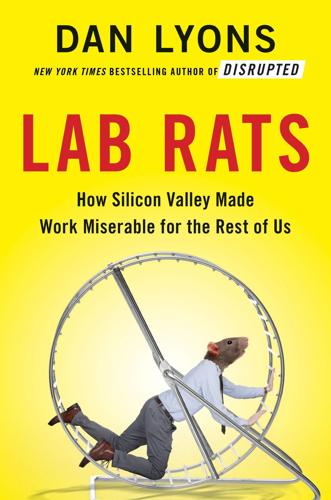
Lab Rats: How Silicon Valley Made Work Miserable for the Rest of Us
by
Dan Lyons
Published 22 Oct 2018
New York Times, August 15, 2015. https://www.nytimes.com/2015/08/16/technology/inside-amazon-wrestling-big-ideas-in-a-bruising-workplace.html. Lemann, Nicholas. “The Network Man: Reid Hoffman’s Big Idea.” New Yorker, October 12, 2015. https://www.newyorker.com/magazine/2015/10/12/the-network-man. Miller, Michael E. “‘Tech Bro’ Calls San Francisco ‘Shanty Town,’ Decries Homeless ‘Riffraff’ in Open Letter.” Chicago Tribune, February 18, 2016. http://www.chicagotribune.com/bluesky/technology/ct-tech-bro-letter-san-francisco-homeless-20160218-story.html. Mims, Christopher. “In Self-Driving-Car Road Test, We Are the Guinea Pigs.” Wall Street Journal, May 13, 2018. https://www.wsj.com/articles/in-self-driving-car-road-test-we-are-the-guinea-pigs-1526212802.
…
To visit them, you drive way up in the hills above Stanford University, where the parking lots are filled with Teslas, birds chirp in the eucalyptus trees, and skinny spandex-clad techies zip around on exotic carbon-fiber racing bikes that cost more than what some people pay for a car. By contrast, to visit Kapor Capital, you drive across the Bay Bridge from San Francisco, drop down off the highway, and drive through a vast homeless camp under a freeway overpass on Martin Luther King Jr. Way, past buildings decorated with graffiti art and pawn shops, bail bond services, and payday lenders. Oakland sits across the bay from San Francisco, but they’re remarkably different places. Oakland is a gritty, working-class city.
…
He is a legend in the world of venture capital and worth a reported $4 billion. He helped launch some of the biggest tech companies in the world, including Google, Yahoo, and PayPal. He is also one of the VCs who kicked in $50,000 each to support the 2016 ballot measure that would sweep homeless people off the streets in San Francisco. Yet he is revered by his peers. Many of them feel the same way he does about hiring women and people of color; they’re just polite enough not to say it out loud, in public. I’ve heard various theories for how things got so bad in Silicon Valley. One is that venture capitalists and tech companies are lazy about recruiting.

Behind the cloud: the untold story of how Salesforce.com went from idea to billion-dollar company--and revolutionized an industry
by
Marc Benioff
and
Carlye Adler
Published 19 Nov 2009
Our 1-1-1 model disseminates a portion of the financial and intellectual wealth of the organization to those most in need: • 1 percent equity: using 1 percent of founding stock to offer grants and monetary assistance to those in need, especially to support youth and technology programs • 1 percent time: finding meaningful activities for salesforce.com employees during their six paid days off a year devoted to volunteerism, and promoting a culture of caring • 1 percent product: facilitating the donation of salesforce.com subscriptions to nonprofits, helping them increase their operating effectiveness and focus more resources on their core mission The 1-1-1 Model in Action A terrific example of how our 1-1-1 model works is a San Francisco initiative called Project Homeless Connect, which brings a wide variety of social service providers—housing experts, doctors, job something meaningful, which made them feel more invested in the company and inspired them to do their best. I thought that secondary gain further justified the hours our employees would be spending outside our office.
…
Dannie, who contributed a harrowing—but ultimately uplifting and hopeful—music video about self-harm, spoke passionately about why she and her friends made the film, their personal struggles, and how they’ve since committed to campaign on the issue of self-harm in schools. Theo, a San 151 BEHIND THE CLOUD Francisco student who has worked with the foundation practically since its inception, contributed a powerful film about homelessness in San Francisco. The city’s mayor, Gavin Newsom, who attended the event, took the opportunity to speak about the ways his administration was trying to address the problems Theo raised in his film. Ahmed and Dima, who hailed from countries with a long and bitter rivalry, and couldn’t communicate with one another in their native languages, discussed the unique opportunity to get to know one another.
…
When I saw the important people watch the film, I realized I have made something bigger. I am happy to see this. I didn’t ever believe it would be like this. It was never in my dreams.’’ I was amazed by what we could achieve by giving young people opportunity and encouragement. Theo’s film on homelessness in San Francisco helped build much needed awareness. Dannie’s film about self-harm encouraged the United Kingdom’s Parliament to increase the amount of money distributed to schools to fund a part-time counselor to help young people deal with emotional issues. The impact was real. Our mission to give people the tools and the platform to make a positive difference grew from there. 152 The Corporate Philanthropy Playbook Play #70: Create a Self-Sustaining Model In summer 2004, we witnessed the true financial power of our integrated model.
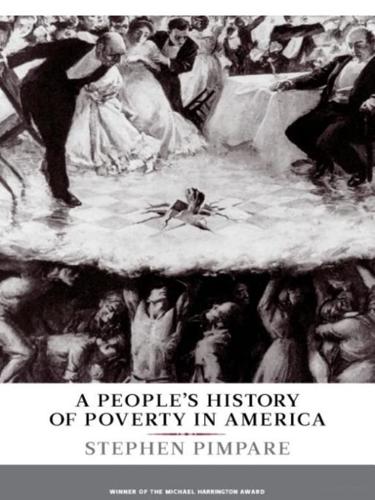
A People's History of Poverty in America
by
Stephen Pimpare
Published 11 Nov 2008
And I told her: here is the baby bottle. We had even warmed up the milk. But she looked at her husband, and her husband said he didn’t want it. What could I do about it, but just feel blue? I didn’t look upon it as charity. It seemed to me that here was a fella’s pride getting the best of him.54 Tony, homeless, living in San Francisco in the 1980s, also shunned aid and preferred to redeem recyclable cans and bottles—what he identifies as his work:The reason I do just about anything for work is I don’t believe in the food lines. I know where all of ’em are at, and I can go down there, but I don’t depend on ’em. I believe in at least being able to cover my own so I can keep myself fed, keep myself clothed and washed up. . . .
…
Louis) public housing and urban renewal efforts Public Works Administration (PWA) housing units Quigley, William “race mixing” in nineteenth-century slums racism of poor people and pregnant women on welfare Rafferty, Eliza railroads and transient lifestyles Rank, Mark Robert Raper, Arthur Raphael, Jody Reagan, Ronald Rector, Robert Red Cross redlining policies Reich, Charles Reitman, Ben relative poverty Relf, Mary Alice and Minnie The Reluctant Welfare State ( Jansson) reproductive behavior and welfare relief policies resistance and rebellion by the poor active resistance African Americans begging and clothing colonial-era and Communists and culture of poverty and deference required by welfare recipients Depression-era embracing indignation food riots indignation meetings by inmates of poorhouses/asylums marches of the unemployed national welfare rights movement nineteenth-century demands for national welfare program nineteenth-century tramps passive/everyday forms of resistance and radicals and slaves Townsend’s movement for national old-age pension urban groups formed to investigate relief workers voting and political participation women’s activism “working the system,” restaurant Dumpsters Reuther, Walter “riding the rails,” Riis, Jacob on the deserving poor and destruction of slum housing documenting “how the other half lives,” middle-class observations of slum life on moral pathologies of the urban poor on poverty rates in New York (1889) slide shows and the fascination with slums The Rise of David Levinsky (Cahan) Rivera, Ingrid Robinson, Patricia Roland, Mrs. L.P. Roosevelt, Eleanor Roosevelt, Franklin Rowley, Mrs. Hal Rowntree, Joseph Rudolph, Sue rural poverty Salazar, Roberto Salvation Army San Francisco homeless life on the streets poor female almshouse inhabitants Sante, Luc Sarat, Austin Save the Children (2005 study on poverty statistics) Schein, Virginia Schneiderman, Rose school meals programs Schwartz, Joel Scots Charitable Society Scott, James C. Seccombe, Karen Second Harvest Sen, Amartya poverty as lack of freedom on relative poverty and living standards on slavery in pre–Civil War South–70, 178 Senate Finance Committee Serviceman’s Readjustment Act of 1944 (GI Bill) sexual behavior and welfare relief policies sexual violence shame/stigma of receiving relief and actual benefits received by those eligible assumptions that the poor are stupid and attitudes toward poverty and welfare and beneficial effects of government relief charity and power/class colonial-era comparing attitudes of welfare recipients/ nonrecipients and deference/subservience Depression-era and the elderly feeling of surveillance feelings of inferiority/shame and food stamps and homelessness hunger and food relief and ignorance about lives of the poor and mass media morals and deserving/undeserving poor myth of the lazy poor pride and denials of relief–54, 158–59, 160–61 relief workers’ efforts to protect from and social critics of government aid and stereotypes the welfare myths and “white collar people,” and women on welfare sharecroppers and share-renters Sheridan, Jim Sherman, William T.
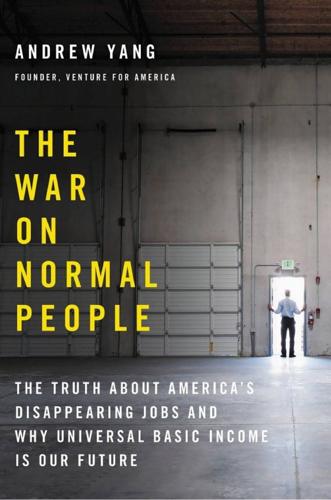
The War on Normal People: The Truth About America's Disappearing Jobs and Why Universal Basic Income Is Our Future
by
Andrew Yang
Published 2 Apr 2018
He estimated that 30 percent of the bank’s home office workers—more than 30,000 employees—were engaged in clerical tasks transferring information from one system to another, and he believed that their roles would be automated within the next five years. I had a similar conversation with a friend at another bank who told me that many of the people in the San Francisco homeless shelter he volunteers at used to work in clerical roles that are no longer necessary, and that his bank was similarly downsizing back office and clerical workers in large numbers. Some argue that it will be possible to automate only a portion of each person’s job. But if you have a department of 100 clerical workers and you find that 50 percent of their work can be automated, you fire half of them and tell the remaining workers to adjust.
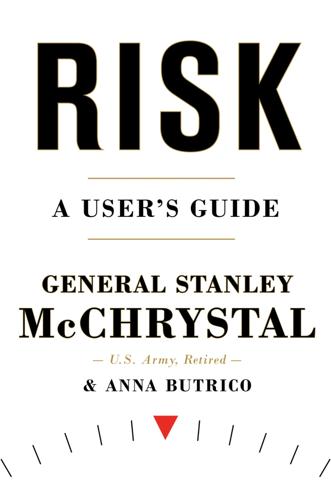
Risk: A User's Guide
by
Stanley McChrystal
and
Anna Butrico
Published 4 Oct 2021
Adding to this challenge was a lack of leadership, as the city’s fire chief engineer had been fatally injured in the initial earthquake. In the end, more than 80 percent of the city was destroyed, up to three thousand lives were lost, and half of the population was left homeless. The fires that followed the San Francisco earthquake of 1906 were equally, if not more, destructive. Despite the tragedy wrought, relief and reconstruction efforts rapidly gained momentum, and by 1915, San Francisco had been largely rebuilt and regained the vibrancy for which it had been recognized. In 1906, the risk of earthquakes was known, but the understanding of their causes was still in its infancy.
…
three thousand lives: “From the Archives: 112 Years Ago”; “San Francisco Earthquake of 1906,” Encyclopedia Britannica Online; “San Francisco Earthquake, 1906,” The Center for Legislative Archives, accessed September 26, 2020, https://archives.gov/legislative/features/sf. population was left homeless: “San Francisco Earthquake, 1906.” In 1906, the risk of earthquakes: “1906 Marked the Dawn of the Scientific Revolution,” USGS, accessed October 29, 2020, https://earthquake.usgs.gov/earthquakes/events/1906calif/18april/revolution.php. Advancements in geophysics: “1906 Marked the Dawn of the Scientific Revolution.”

The Future of Money
by
Bernard Lietaer
Published 28 Apr 2013
The average rent for a twobedroom unit increased by 110% over the same time period, while rent for a vacant studio increased by a whopping 288%. This explains why 20% of the homeless families have at least one parent with a fulltime job. In short, the fastest-rising component of the homeless is the families of the 'working poor' of yesteryear. San Francisco is in no way a strange anomaly. Because the US Department of Education funds a project tracking schooling problems of homeless children in San Francisco Bay Area experienced by homeless children, it has prepared a report for the US Congress identifying the different ages of homeless children. Here again, only eligible recipients are counted, which means these children still have to be 'in the system' enough to actually try to go to school.
…
She explained that the best data is generated indirectly, because each county keeps track of actual numbers of families and children who seek assistance and are eligible for a particular shelter programme /the AFDC-HAP) during each fiscal year. Figure 4.5 shows that the number of homeless children in the San Francisco Bay Area alone passed the 40,000 mark in 1995: 325% higher than it was eight years earlier. These numbers reflect by definition only 'eligible recipients', so the actual numbers must be higher. There may be many reasons why the parents of these children became homeless, but the simplest is straightforward arithmetic.

The Rent Is Too Damn High: What to Do About It, and Why It Matters More Than You Think
by
Matthew Yglesias
Published 6 Mar 2012
But even in the heart of Silicon Valley most people aren’t computer programmers, just as most New Yorkers aren’t investment bankers and most Bostonians aren’t college professors. And yet high-income cities aren’t just richer on average—the median incomes are higher. The difference is crucial. If Bill Gates and two homeless guys go to a bar, then on average you’re looking at a very wealthy set of bar patrons. But the median bar patron is still a homeless guy. The San Francisco MSA had a median household income of $73,980 in 2009, over 20 percent higher than the national median. In the Washington, DC, area it’s $85,648. This reflects the fact that the typical person can, in fact, increase his productivity simply by relocating to a more prosperous location. The term “productivity” can be misleading in this regard.
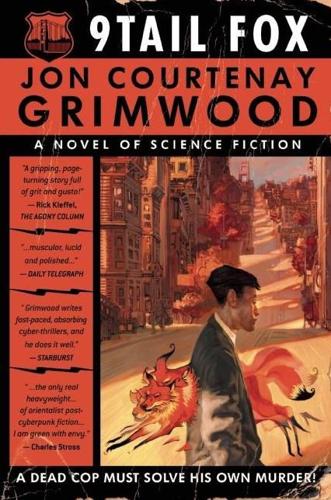
9Tail Fox
by
Jon Courtenay Grimwood
Published 19 Oct 2005
Being Sergeant Bobby Zha wasn’t practical in a city where half the population had read about his death or seen it reported on TV, and where those who apparently counted themselves as his friends were probably still nursing hangovers from yesterday’s wake. ‘What are you planning to do with the cat?’ ‘Keep it,’ said Bobby. The colonel and Bobby had a deal. If anything happened then Bobby took care of Lucifer. As promises went, it was a small price for having Colonel Billy act as Sergeant’s Zha’s eyes and ears on the streets. In San Francisco the homeless weren’t just a problem. They were an embarrassment to a city so gilded it was happy to look down on New York. Much of Bobby’s old job had been about keeping them from becoming more embarrassing still. ‘It’s just an animal,’ said Latif. ‘Yeah,’ said Bobby. ‘Aren’t we all …’ They laid Colonel Billy to rest under a pile of rocks and hid the mound with brush taken from a nearby thorn bush.
…
In the rush of blood which followed the trees stopped talking, the sky ran through purple into black, the tree beneath which she sat shimmered a little and then the rush was done. ‘Okay?’ Louie asked. Lucifer grinned. People were friendlier to Louie now she had a cat tucked between her tits, with its head poking from the neck of her shirt. Even tourists, who’d yet to master that trick which allowed most of San Francisco to banish the homeless to the realm of ghosts and so had to work harder to render people like Louie invisible … even they laughed and nodded. One, a middle-aged man in T-shirt, pearl earring and black jeans had pulled $100 from his pocket and then hesitated, trapped between impulse and embarrassment. Unless he’d just been trapped by the contrast between Louie’s perfect body and the scars which uglied up her arms like notches on a stick.

The Viral Underclass: The Human Toll When Inequality and Disease Collide
by
Steven W. Thrasher
Published 1 Aug 2022
more died at San Quentin: Brett Simpson, “‘Governor Newsom, Save Our Lives: We’re Dying in Here’; Demonstrators Plea for San Quentin Inmates’ Release,” San Francisco Chronicle, July 10, 2020, https://www.sfchronicle.com/crime/article/San-Quentin-coronavirus-outbreak-Former-inmate-15398062.php. hotel rooms for the unhoused: Anna Bauman, “Protesters Stage ‘Die-In’ Outside SF Mayor’s Home over Hotel Rooms for Homeless,” San Francisco Chronicle, May 1, 2020, https://www.sfchronicle.com/bayarea/article/Protesters-hold-die-in-outside-Mayor-15239121.php. COVID-19 hot spot Rikers Island jail: Nick Pinto, “If Coronavirus Deaths Start Piling Up in Rikers Island Jails, We’ll Know Who to Blame,” Intercept, March 23, 2020, https://theintercept.com/2020/03/23/coronavirus-rikers-jail-de-blasio-cuomo/.
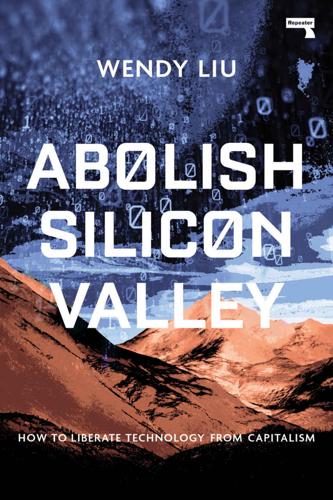
Abolish Silicon Valley: How to Liberate Technology From Capitalism
by
Wendy Liu
Published 22 Mar 2020
See https://www.bayareamarketreports.com/trend/san-francisco-home-prices-market-trends-news. 18 See, for example, “SF’s Homeless Count Reaches More Than 9,700” by Adam Brinklow for Curbed, published July 8, 2019, at https://sf.curbed.com/2019/7/8/20686653/san-francisco-sf-homeless-count-number-population-2019. 19 For details on San Francisco’s affordable housing program, see “A Guide to Below-Market-Rate Housing in San Francisco” by Chris Roberts for Curbed, published October 8, 2018, at https://sf.curbed.com/2018/10/8/17902408/guide-bmr-affordable-housing-lottery-san-francisco. 20 For more on the difference between housing’s status as exchange value versus use value, see David Madden and Peter Marcuse’s book, In Defense of Housing (Verso, 2016). 21 See, for example, Anna Minton’s Big Capital: Who Is London For?

Hollow City
by
Rebecca Solnit
and
Susan Schwartzenberg
Published 1 Jan 2001
In the left side: Says to conver- news seems to New Mission News, on "Mission He Wants my Armory Developer Do the Right Thing" — fortress vacant for decades in one of the bleaker parts of the North Mission, once proposed site. Now On as a homeless is now slated to become a dot-com work- the right side, "Proposed Resource Center for the Homeless Homeless." pairing: shelter, on the And in the San Francisco Independent there's front page of the Neighborhood Planting Programs in Budget Peril" and "Planners a Is double Section, "Street Tree OK Pottery Barn for Market and Castro" with the subhead "Neighborhood Divided over Chain — SAN FRANCISCO, CAPITAL OF THE TWENTY-FIRST CENTURY These Store."
…
Artist of art- being given special Artists didn't seem to be numerous or wealthy enough to create significant displacement, but they were glamorous enough to attract Martha (The artist Rosler's 1988 anthology If You Lived Here: The City in Art, Theory, and Social Activism homelessness, housing and politics.) it. In San Francisco, fought for and won documents the debates then about artists' place in artists inspired New York's space and by the Manhattan example the "live /work" ordinance, the biggest Trojan horse it ever dragged into a was intended city. Like the New York certification inner-city cores program, to legitimize artists converting industrial space into live-in studios (and a tale could be told about industries that and about how a whole aesthetic and were leaving the scale George Gallery, its Herms' show developed out at the 2222 Fillmore Street, San Francisco, 1961
…
San Francisco could ism in which its its content smoothed out, homogenized by become a hollow a Disneyland of urban- city, varicolored Victorian houses and diversity of skin colors and cuisines covers up the absence of the poor, the subversive, the creative, the elderly, the free. In a way, being delivered vacant to the brave altruism and idealism are It is it has, but it is of San Francisco is new technology economy, and two of the tenants facing homelessness. clear that the Internet wildly as all economy won't continue here to stay. Of boom to as course, the technology only extends the reach of a capitalist agenda that began privatizing the public and maximizing the commodification of everyday life long ago.
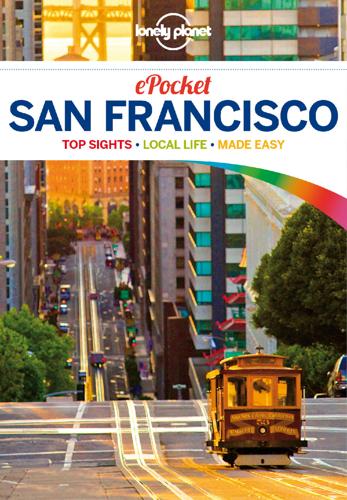
Lonely Planet Pocket San Francisco
by
Lonely Planet
and
Alison Bing
Published 31 Aug 2012
Firebreaks were created by dynamiting a trough along Van Ness Ave – setting off new fires. Citizens fled to Potrero Hill and Buena Vista Park, and for three days watched their city and its dreams of grandeur go up in smoke. The death toll topped 3000, and 100,000-plus city residents were left homeless. With politicians suddenly scarce, San Francisco’s entertainers staged the city’s comeback. All but one of the city’s 20 historic theaters had been destroyed by the earthquake and fire, but theater tents were set up amid still-smoking rubble. Opera divas sang their hearts out to San Francisco gratis – though the world’s most famous tenor, Enrico Caruso, vowed never to return to the city after the quake jolted him out of bed.
…
Public Holidays Holidays that may affect business hours and transit schedules include the following: New Year’s Day January 1 Martin Luther King Jr Day Third Monday in January Presidents’ Day Third Monday in February Easter Sunday (and Good Friday and Easter Monday) in March or April Memorial Day Last Monday in May Independence Day July 4 Labor Day First Monday in September Columbus Day Second Monday in October Veterans Day November 11 Thanksgiving Fourth Thursday in November Christmas Day December 25 Safe Travel Top Tip Keep your city smarts and wits about you, especially at night in the Tenderloin, SoMa and the Mission. After dark, Dolores Park, Buena Vista Park and the entry to Golden Gate Park at Haight and Stanyan Sts can turn seedy, with occasional drug dealing. Panhandlers and homeless people are a reality in San Francisco. People will probably ask you for spare change, but donations to local non-profits stretch further. For safety, don't engage with panhandlers at night or around ATMs. Otherwise, a simple ‘I'm sorry,’ is a polite response. Telephone Top Tip North American travelers can use their cell phones in San Francisco and the Bay Area, but should check with the carrier about roaming charges.
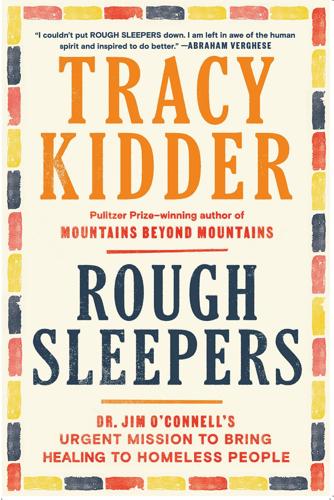
Rough Sleepers: Dr. Jim O'Connell's Urgent Mission to Bring Healing to Homeless People
by
Tracy Kidder
Published 17 Jan 2023
In Denver, for instance, the Colorado Coalition for the Homeless had used a time of recession to buy distressed properties and had created about 2,000 housing units, virtually ending homelessness in the city—for a while. San Francisco’s public health department had done something similar, converting empty public buildings into about 1,800 apartments. Both examples had made Jim wish the Program had bought its own collection of abandoned buildings in Boston, back when they were numerous and cheap. But just as in Boston, the cost of housing in Denver and San Francisco had risen outlandishly, while the pool of homeless candidates for housing kept growing. “They’ve now got a problem that’s worse than when they started,” Jim told me.
…
For data on the housing projects in San Francisco, see: Office of the Controller, City Services Auditor. “Human Services Agency: Care Not Cash Is Achieving Its Goals.” City and County of San Francisco, April 30, 2008. San Francisco Human Services Agency. “San Francisco’s Ten Year Plan to End Chronic Homelessness: Anniversary Report Covering 2004 to 2014.” City and County of San Francisco, June 2014. San Francisco Human Services Agency. “Care Not Cash—Overview and Progress Report.” Prepared for San Francisco Ten Year Plan Implementation Council. Department of Human Services/Department of Aging and Adult Services, February 9, 2005.

Uncanny Valley: A Memoir
by
Anna Wiener
Published 14 Jan 2020
At sundown, in the doorways of stores selling tie-dye leggings and postcards of acid pioneers, people curled up in secondhand camping gear and atop cardboard boxes, a slightly safer option than sleeping in the park. It was possible that the tourists trawling the commercial strip mistook San Francisco’s homelessness epidemic for part of the hippie aesthetic. It was possible that the tourists didn’t think about the homelessness epidemic at all. * * * Weekends, once I ran out of work, were a challenge. Sometimes I met up with coworkers, but mostly I spent time alone. I felt free, invisible, and very lonely.

The Nation City: Why Mayors Are Now Running the World
by
Rahm Emanuel
Published 25 Feb 2020
He has to do whatever it takes to make sure that the subway system is modernized. If he doesn’t, the progress of his great city will come to a halt, and the city will choke under his watch. In San Francisco, as the technology sector thrives, so, unfortunately, does rampant homelessness. The latter problem is a symptom of what I believe is one of the biggest challenges that face cities now and will face them in the future. That problem is the real cost of urban prosperity. One of the prime drivers behind the homelessness problem in San Francisco, and many other cities for that matter, is the rise in the cost of rent and the lack of affordable housing. These factors have not only created more homeless people.

Little Brother
by
Cory Doctorow
Published 29 Apr 2008
They drifted around, looking awkward and uncomfortable in their giant shorts and loose-fitting shirts that no-doubt hung down to cover the chandelier of gear hung around their midriffs. Dolores Park is pretty and sunny, with palm trees, tennis courts, and lots of hills and regular trees to run around on, or hang out on. Homeless people sleep there at night, but that's true everywhere in San Francisco. I met Ange down the street, at the anarchist bookstore. That had been my suggestion. In hindsight, it was a totally transparent move to seem cool and edgy to this girl, but at the time I would have sworn that I picked it because it was a convenient place to meet up.
…
They're full of cameras. But Zeb knew what he was doing. He had me meet him in the last car of a certain train departing from Powell Street Station, at a time when that car was filled with the press of bodies. He sidled up to me in the crowd, and the good commuters of San Francisco cleared a space for him, the hollow that always surrounds homeless people. "Nice to see you again," he muttered, facing into the doorway. Looking into the dark glass, I could see that there was no one close enough to eavesdrop -- not without some kind of high-efficiency mic rig, and if they knew enough to show up here with one of those, we were dead anyway.
…
Van looked like she was waiting for me to say something, but I had nothing to say to that. She left me there. # Zeb had a pizza for me when I got back "home" -- to the tent under a freeway overpass in the Mission that he'd staked out for the night. He had a pup tent, military surplus, stenciled with SAN FRANCISCO LOCAL HOMELESS COORDINATING BOARD. The pizza was a Dominos, cold and clabbered, but delicious for all that. "You like pineapple on your pizza?" Zeb smiled condescendingly at me. "Freegans can't be choosy," he said. "Freegans?" "Like vegans, but we only eat free food." "Free food?" He grinned again.

On the Clock: What Low-Wage Work Did to Me and How It Drives America Insane
by
Emily Guendelsberger
Published 15 Jul 2019
When the customer steps forward with her order receipt, hand over the tray with a smile and hope she doesn’t want anything else. I assume we keep everything behind the counter because of all the homeless people, who are as much of an omnipresence in San Francisco as the western North Carolina accent is in Hickory. I live in Philly and spend a lot of time in New York and DC, cities with homelessness problems of their own. But San Francisco is like nothing I’ve ever seen. It’s hard to get good data, but a recent survey counted nearly ten thousand homeless people just in San Francisco proper. Nearly half of those were living in the downtown Sixth District, home to the Mission and this McDonald’s.
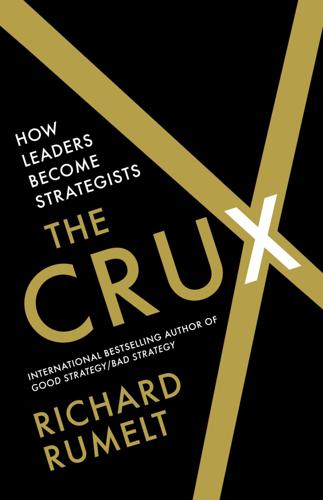
The Crux
by
Richard Rumelt
Published 27 Apr 2022
An elegant mathematical system, the problem with decision theory, whether economic or behavioral, is that it presumes someone has already cooked up a set of alternative actions to choose among. This is fine if you are trying to decide whether to buy or rent a forklift truck, but it is useless if you face the gnarly challenge of homelessness in San Francisco. There has been a growing understanding about human cognitive biases and how they can affect decision making. Many of these are systematized and explained in Daniel Kahneman’s fascinating book, Thinking, Fast and Slow.4 For senior executives the most important seem to be optimism bias, confirmation bias, and the inside-view bias.
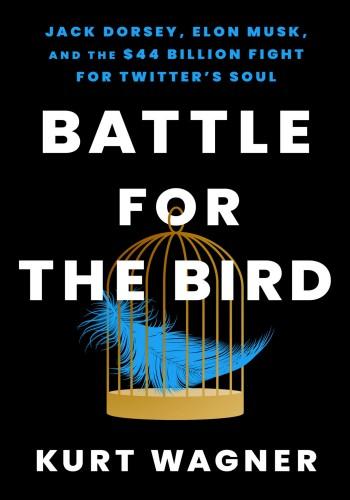
Battle for the Bird: Jack Dorsey, Elon Musk, and the $44 Billion Fight for Twitter's Soul
by
Kurt Wagner
Published 20 Feb 2024
Musk retweeted the list just to point out that many of those accounts “rarely” tweeted. “Is Twitter dying?” he asked out loud to his 81 million followers. Later he tweeted a poll asking people if Twitter should remove the “w” from its name and start calling the company “Titter” instead. He floated another poll asking if Twitter should convert its San Francisco headquarters into a homeless shelter, and suggested Twitter should get rid of ads for paying users. Agrawal was frustrated, and reasonably so. Some of his employees were already upset that Musk was joining the board; now, on the day that board appointment was supposed to become official, Musk was publicly embarrassing the company.
…
The more time he spent… in the midst of an all-nighter: Isaacson, Elon Musk, 451. “Is Twitter dying?”: Elon Musk (@elonmusk), “Most of these ‘top’ accounts tweet rarely and post very little content. Is Twitter dying?” Twitter, April 9, 2022, 6:32 a.m., https://twitter.com/elonmusk/status/1512785529712123906. should convert its San Francisco headquarters into a homeless shelter: Ginger Adams Otis and Salvador Rodriguez, “Elon Musk Suggests Changes to Twitter, Takes Barbs at Company,” Wall Street Journal, April 11, 2022, https://www.wsj.com/articles/elon-musk-suggests-changes-to-twitter-blue-subscription-service-11649605777. “You are free to tweet… aren’t there right now”: Twitter, Inc. v.
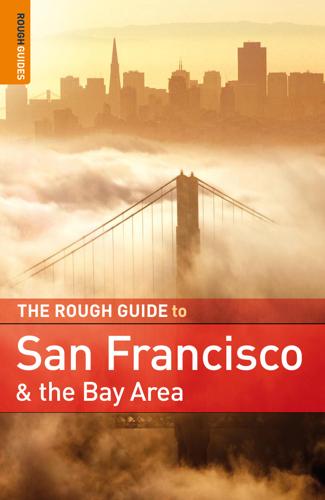
Rough Guide to San Francisco and the Bay Area
by
Nick Edwards
and
Mark Ellwood
Published 2 Jan 2009
This cluster was the brainchild of brilliant urban planner Daniel Burnham, a follower of the “City Beautiful” movement, whose central tenet was that utopian cities in vaguely classical style would be so beautiful that they’d inspire civic loyalty and upstanding morals in even the most impoverished 111 San Francisco’s homeless SoMa, the T e n d e rl oi n , and C i v i c C e nte r San Francisco’s most intractable social problem is homelessness, an issue that’s clear even to casual tourists. Downtown, much of Market Street west of Hallidie Plaza is filled with vagrants day or night, drawn here by the social service administration buildings that sit on the blocks between Sixth and Eighth streets.
…
Across the plaza from the Vaillancourt Fountain, under the Hyatt Regency tower, stands the whirling sculpture La Chiffonière (Rag Lady), by Jean Dubuffet. Dubuffet intended for the dark mass of stainless steel, jigsaw-puzzle-like pieces to form the abstract impression of a tattered homeless person – a nod to San Francisco’s highest-profile social problem. The Ferry Building Now one of San Francisco’s true gems, the Ferry Building makeover is arguably the most impressive of all the recent public space renovations in the city. Until the freeway flyover that rimmed the Embarcadero was demolished in 1992, however, few paid it any attention.
…
The fire all but leveled the entire area from the waterfront, north and south of Market Street, and west to Van Ness Avenue, whose grand mansions were dynamited in a politically daring move to form a firebreak. The statistics are staggering: 490 city blocks and 28,000 buildings were destroyed, causing $300–500m worth of damage – at the time, two-thirds of the property value of the city and one-third of the taxable property in all California. Half of San Francisco’s population – some 100,000 people – were left homeless and fled the city. Many of those who stayed set up camp in the barren reaches of what’s now Golden Gate Park, where soldiers from the Presidio undertook the mammoth task of establishing and maintaining a tent city for about 20,000 displaced San Franciscans. The official death toll has long been touted at only 500 people, but historians have challenged such figures and upped estimates to at least 3000 dead and likely thousands more.
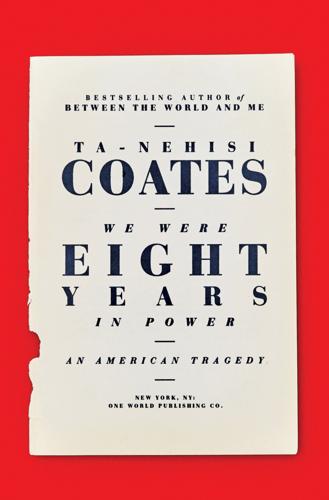
We Were Eight Years in Power: An American Tragedy
by
Ta-Nehisi Coates
Published 2 Oct 2017
The burden continues after the father returns home, because a criminal record tends to injure employment prospects.*6 Through it all, the children suffer. Many fathers simply fall through the cracks after they’re released. It is estimated that between 30 and 50 percent of all parolees in Los Angeles and San Francisco are homeless. In that context—employment prospects diminished, cut off from one’s children, nowhere to live—one can readily see the difficulty of eluding the ever-present grasp of incarceration, even once an individual is physically out of prison. Many do not elude its grasp. In 1984, 70 percent of all parolees successfully completed their term without arrest and were granted full freedom.

Frommer's Irreverent Guide to San Francisco
by
Matthew Richard Poole
Published 17 Mar 2006
The Civic Center area houses the ballet, the opera, the symphony, the main library, and City Hall, along with a number of wonderful boutique hotels such as the Inn at the Opera, and restaurants that are virtually empty after 8:30pm (San Franciscans tend to eat before performances). Right in the middle of it all is a plaza that has been a constant battle site for San Francisco’s intractable homeless ACCOMMODATIONS 20 problem. Some find the scene repugnant; others chalk it up as an integral part of urban life. Public transportation is a breeze in this centrally located neighborhood, and parking is very reasonable at the Civic Center garage. (Don’t go to any of the private garages near the Opera House or you may have to call home for extra cash.)
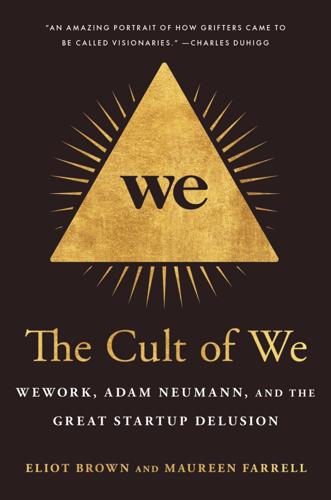
The Cult of We: WeWork, Adam Neumann, and the Great Startup Delusion
by
Eliot Brown
and
Maureen Farrell
Published 19 Jul 2021
Wintroub’s appeal lay in his blend of techno-optimism and what seemed like a strong moral compass. Many entrepreneurs genuinely liked Wintroub; they believed he cared about them as people. He would call to check in on their families; he would grow teary-eyed when waxing sentimental about his grandfather or his wife and three daughters, or when describing the plight of the homeless in San Francisco. He was unabashedly emotional and admired for the time outside of work that he and his family devoted to social causes. Wintroub’s star rose precipitously at the bank. Dimon and other higher-ups in New York saw him as central to their aspirations for securing key positions in the largest deals.
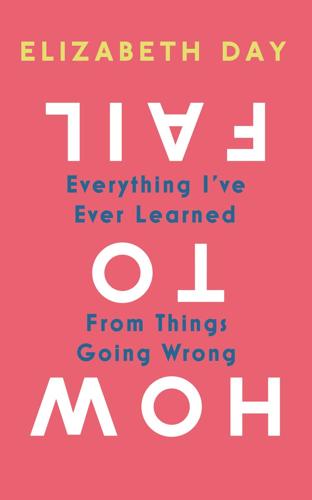
How to Fail: Everything I’ve Ever Learned From Things Going Wrong
by
Elizabeth Day
Published 3 Apr 2019
I decided to walk to the beach for an energetic cleanse of the more conventional kind, and a drunk homeless person started shouting endearments at me, which might or might not have been because of my newly steamed vagina but was probably more connected to the whisky bottle clutched in a brown paper bag in his hand. (A few days later, on a work trip to San Francisco, another drunk homeless man catcalled me as I walked past and shouted ‘NICE FEET!’, which is one of the most random compliments I’ve ever been given. I had not steamed my vagina on that occasion and, indeed, have never done so since.) My Week As Gwyneth culminated in a two-hour master-class with Tracy Anderson, the trainer Paltrow famously credits with giving her ‘the butt of a 22-year-old stripper’.
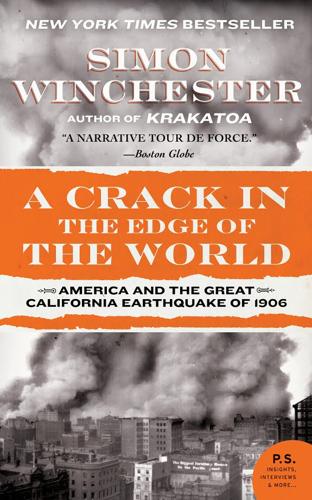
A Crack in the Edge of the World
by
Simon Winchester
Published 9 Oct 2006
.* The scenes were utterly distressing: horribly mutilated victims, bewilderment, wailing and fear on all sides, violent patients tied to trees with sheets, screeching bloody murder. Though the Agnew’s disaster was especially dreadful, and though there were moderate death tolls in some other southern towns – in San Jose nineteen people died and 8,000 were made homeless – to the north of San Francisco things were a good deal worse. Both the force of the shock and the displacement caused by the rupture were considerably greater than in the south, and the experiences were generally much more distressing. The vineyard country of the Napa and Sonoma valleys – though at the time reeling from the phylloxera infestation – was hit particularly hard, and workers tell of the acres of vines taking on the appearance of the ocean, with the rows of grape arbours rising and falling in great waves as the shocks tumbled down the hillsides.
…
And then, at the end of the week, the weather turned damp and cold, as it so often does in spring in San Francisco, and then it began to rain, the fires were slowly snuffed out, and despite the mud of black ash everywhere and the dreary appearance of thousands upon thousands of gutted and ruined buildings, and despite the dripping misery of hundreds of thousands of refugees in their tent-cities and out on the grasses of the parks, at last the city could begin to think of what it might do next. It is known that 28,188 buildings were destroyed; 478 people were said to have been killed – a figure that has risen over the years to well over 3,000; and of the 400,000 people whom the last city census had counted as living in San Francisco, 225,000 were homeless. The great majority of these last were men, women and children seeking refuge – men, women and children who were, in other words, now of a class that the Promised Land had never imagined it might see created within its own domains. They were Americans seeking refuge from the calamity, and thus they were American refugees.

Falter: Has the Human Game Begun to Play Itself Out?
by
Bill McKibben
Published 15 Apr 2019
In 2017 the United Nations sent its special rapporteur on extreme poverty and human rights to tour America. After a two-week visit, this Australian expert concluded that “for one of the world’s wealthiest countries to have forty million people living in poverty, and over five million living in ‘Third World’ conditions is cruel and inhuman.”2 He recounted many horrors—fourteen thousand homeless people in San Francisco arrested for public urination when the ratio of toilets to people in the city’s Skid Row “would not even meet the minimum standards the UN sets for Syrian refugee camps”; and the people he’d seen without any teeth because adult dental care isn’t covered by Medicaid—but he focused most closely on the prevalence of hookworm in rural America.
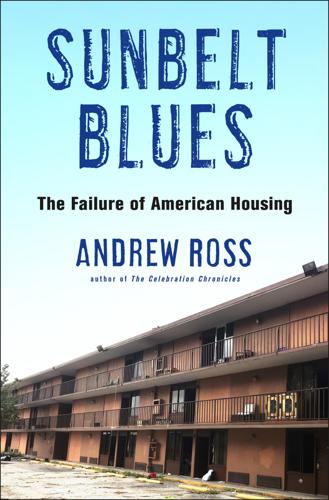
Sunbelt Blues: The Failure of American Housing
by
Andrew Ross
Published 25 Oct 2021
Yet in the public mind, the housing crisis is still a distinctly urban phenomenon, a predicament especially of top-tier cities where so many aspire to live. This perception is shaped by countless articles about tech bros, investment bankers, or gentrifying hipsters displacing working people of color from New York and San Francisco neighborhoods, and by images of sprawling homeless encampments on downtown streets in Los Angeles and Seattle. We know that “the rent is too damn high” for big-city dwellers because the lion’s share of media commentary focuses on their plight, typically framed as a story about the runaway cost of living in the superstar metropolises.
…
By the end of the pandemic summer of 2020, the camps were filling out again with returnees, new arrivals from a wave of motel evictions, and a sprinkling of COVID refugees. During the coronavirus crisis, concentrations of unhoused people in cities around the country were seen as public health threats, and some widely ridiculed alternatives to shelters were introduced by authorities. As most hotel rooms nearby lay empty, San Francisco opened a “safe sleeping village” for socially distanced homeless in the Civic Center Plaza, just yards from City Hall. Las Vegas officials, more notoriously, converted a parking lot into a quarantine area for rough sleepers. In Los Angeles, a thriving self-organized encampment in Echo Park was forcibly uprooted and its members relocated to motel and hotel environments where their behavior was managed as if they were detainees.11 In Orlando, the shelters were so overcrowded that authorities elected to move some occupants into vacant hotels, but the woods emerged as a better option for distancing and self-isolation.
…
Along with Starbucks and other affected corporations, it began a signature-gathering initiative to place a repeal of the tax on the November ballot. Cowed by the threats, the city council reversed its decision less than a month after putting the tax in place.33 Similar fights have been playing out elsewhere, with varying results. In San Francisco, a tax on big businesses to help fund homeless initiatives was opposed by several tech companies (including Lyft, Square, Stripe, and Twitter), but the proposition passed anyway in 2018. In Cupertino, on the other hand, Apple pushed back against a similar ordinance and won. While they fervently resist new taxes, the tech companies also avoid paying their fair share of existing ones, depriving local, state, and federal authorities of money they might use to address the housing crisis.
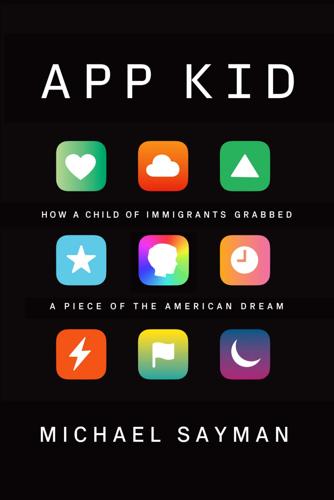
App Kid: How a Child of Immigrants Grabbed a Piece of the American Dream
by
Michael Sayman
Published 20 Sep 2021
I gripped the handle of my suitcase tighter and stepped around the legs of an unconscious man who was sprawled under a cardboard sign reading, anything helps. In Miami, you rarely saw people living on the street. It was just too hot. I’d heard that California had more unsheltered people than any other state. San Francisco and all of Silicon Valley had a particularly large homeless population, thanks to a housing shortage and the wealth bubble created by the rise of big tech over the last two decades. The average tech engineer here spent 40 to 50 percent of their salary on rent, not leaving much for savings, buying a house of their own, or eating out off campus.
…
I was making good money—great money, by most of the world’s standards. But it somehow didn’t go very far in Silicon Valley. What if I ended up following in my parents’ financial footsteps and losing everything? Was signing on with this Jack guy my first step toward the flip side of the American dream? An image flashed in my mind: me, homeless and sprawled across a San Francisco sidewalk. I shuddered. Shit, was that some kind of a premonition? Quickly, ignoring the weird feeling in my gut, I scribbled my “signature” on the iPad and handed it back to Jack. I was being dumb. Other than rent, I had hardly any expenses, thanks to the shuttle and the dining plan.

Breaking Twitter: Elon Musk and the Most Controversial Corporate Takeover in History
by
Ben Mezrich
Published 6 Nov 2023
But as optimistic as Elon had felt after that first day of texts, now, in the doorway to Stargate, he realized that again, it was nothing more than conversation. By the next day, the beginning of the weekend, Elon expressed his frustration the way he often had in the past: he’d launched a fiery tweetstorm to his now over eighty million followers. He’d started by posting a poll, a vote on whether or not Twitter should turn its San Francisco headquarters into a homeless shelter. He’d followed that tweet with a comment about Twitter Blue, the platform’s subscription service, suggesting that users should be allowed to pay for Blue with Dogecoin, and in turn receive one of the precious blue “authentication checkmarks” that were normally reserved for celebrities, journalists, politicians, and other notables.

San Francisco
by
Lonely Planet
Glide Memorial United Methodist Church Church Offline map Google map ( 415-674-6090; www.glide.org; 330 Ellis St; celebrations 9am & 11am Sun; & Powell St) The 100-member Glide gospel choir kicks off Sunday celebrations, and the welcome is warm for whoever comes through the door – the diverse, 1500-plus congregation includes many who’d once lost all faith in faith. After the celebration ends, the congregation keeps the inspiration coming, providing a million free meals a year and housing for formerly homeless families – now that’s hitting a high note. San Francisco Main Library Notable Building Offline map Google map ( 415-557-4400; www.sfpl.org; 100 Larkin St; 10am-6pm Mon & Sat, 9am-8pm Tue-Thu, noon-5pm Fri & Sun; ; & Civic Center) The vast skylight dome sheds plenty of light through San Francisco’s Main Library. And this being San Francisco, the library actively appeals to broad audiences – to wit the African American Center, Chinese Center, the James C Hormel Gay & Lesbian Center, and the Center for San Francisco History.
…
After three days and two nights, most of the city was reduced to a smoldering black heap. The death toll mounted to an estimated 3000 people, plus an unknown number of prostitutes kept under lock and key. More than a third of the 300,000 people living in the city at the time were left homeless. Thousands left San Francisco for good, convinced its glory days were over. Built in 1907, soon after the earthquake, the Great American Music Hall still shows the determined flamboyance of post-earthquake San Francisco, with carved gilt decor recalling the city’s Gold Rush heyday and scantily clad frescoed figures hinting at other possible backstage entertainments.

San Francisco
by
Lonely Planet
Glide Memorial United Methodist Church Church Offline map Google map ( 415-674-6090; www.glide.org; 330 Ellis St; celebrations 9am & 11am Sun; & Powell St) The 100-member Glide gospel choir kicks off Sunday celebrations, and the welcome is warm for whoever comes through the door – the diverse, 1500-plus congregation includes many who’d once lost all faith in faith. After the celebration ends, the congregation keeps the inspiration coming, providing a million free meals a year and housing for formerly homeless families – now that’s hitting a high note. San Francisco Main Library Notable Building Offline map Google map ( 415-557-4400; www.sfpl.org; 100 Larkin St; 10am-6pm Mon & Sat, 9am-8pm Tue-Thu, noon-5pm Fri & Sun; ; & Civic Center) The vast skylight dome sheds plenty of light through San Francisco’s Main Library. And this being San Francisco, the library actively appeals to broad audiences – to wit the African American Center, Chinese Center, the James C Hormel Gay & Lesbian Center, and the Center for San Francisco History.
…
After three days and two nights, most of the city was reduced to a smoldering black heap. The death toll mounted to an estimated 3000 people, plus an unknown number of prostitutes kept under lock and key. More than a third of the 300,000 people living in the city at the time were left homeless. Thousands left San Francisco for good, convinced its glory days were over. Built in 1907, soon after the earthquake, the Great American Music Hall still shows the determined flamboyance of post-earthquake San Francisco, with carved gilt decor recalling the city’s Gold Rush heyday and scantily clad frescoed figures hinting at other possible backstage entertainments.
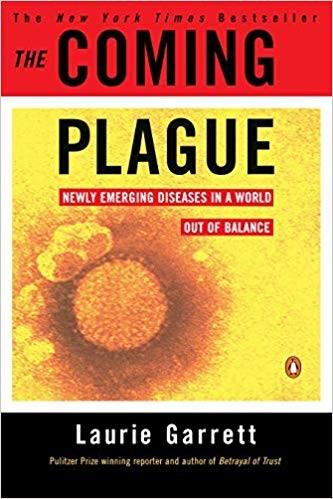
The Coming Plague: Newly Emerging Diseases in a World Out of Balance
by
Laurie Garrett
Published 31 Oct 1994
But in desperately poor neighborhoods of the South Bronx one out of every 43 newborns, or 2.34 percent, was infected—and every one of them was born in a public hospital.113 Those numbers could only be expected to worsen as the epidemic’s demographics shifted into younger, predominantly heterosexual population groups.114 A significant percentage of the nation’s HIV-positive population was also homeless, living on the streets of American cities. A 1991 study, led by Andrew Moss, of homeless men and women in San Francisco found that 3 percent of those who had no identifiable risk factors for HIV exposure were infected. Another 8 percent of the homeless were HIV-positive due to injecting drug use, prostitution, or sex with an infected individual. Overall, more than one out of every ten homeless adults in San Francisco carried the virus.115 HIV wasn’t the only microbe that was exploiting opportunities in America’s urban poor population: hepatitis B (which by 1992 was responsible for 30 percent of all sexually transmitted disease in America), syphilis, gonorrhea, and chancroid were all appearing less commonly in Caucasian gay men and with alarming, escalating frequency in the heterosexual urban poor, particularly those who used crack cocaine or heroin.
…
Curran was discreetly named director of the quietly created task force, overseeing a budget of less than $200,000 and a staff of twenty, most on loan from other programs.4 The entire CDC budget for 1981 was just $288 million.5 Meanwhile, Gayling Gee was having a terrible time dealing with her Kaposi’s patient. Homeless, moving from one San Francisco crash pad to another, the young prostitute would scrounge enough change every morning to buy a cup of coffee, a doughnut, and bus fare to the hospital. “Help me, Gayling,” he would plead. “I don’t know what to do.” Too weak to work at any trade, he fell way outside the social services safety net of the day.
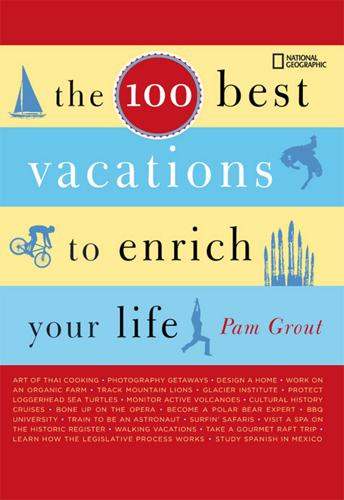
The 100 Best Vacations to Enrich Your Life
by
Pam Grout
Published 14 May 2007
If this sounds a little like kid’s camp, slather on the sunscreen and listen up. For 12 weeks every summer, Camp Winnarainbow is a kid’s camp. Thanks to royalties from Jerry Garcia’s namesake Ben and Jerry’s ice cream flavor and grants from the Grateful Dead’s Rex Foundation, camp scholarships are provided to homeless kids from the San Francisco Bay Area, as well as to Native American kids from a South Dakota reservation. * * * SEVEN DEGREES OF WAVY GRAVY “You, too, can be sucked up in the tornado of talent.” —Wavy Gravy You might have played the trivia game Six Degrees of Kevin Bacon. The idea is that any actor can be linked via film roles to actor Kevin Bacon.

Basic Economics
by
Thomas Sowell
Published 1 Jan 2000
Rising prices not only allocate existing housing, they provide incentives for rebuilding and for renters to use less space in the meantime, as well as incentives for those with space in their homes to take in roomers while rents are high. In short, just as there can be a shortage without any greater physical scarcity, so there can be a greater physical scarcity without any shortage. People made homeless by the huge 1906 San Francisco earthquake found housing more readily than people made homeless by New York’s rent control laws that took thousands of buildings off the market. Hoarding In addition to shortages and quality deterioration under price controls, there is often hoarding—that is, individuals keeping a larger inventory of the price-controlled goods than they would ordinarily under free market conditions, because of the uncertainty of being able to find it in the future.
…
{53} Diana Geddes, “The Doors Have Closed on Furnished Accommodation,” The Times of London, January 24, 1975, p. 11. {54} William Tucker, Zoning, Rent Control and Affordable Housing (Washington: Cato Institute, 1991), p. 21. {55} Christopher Jencks, The Homeless (Cambridge, MA: Harvard University Press, 1994), p. 99. {56} Richard W. White, Jr., Rude Awakenings: What the Homeless Crisis Tells Us (San Francisco: ICS Press, 1991), p. 123. {57} Joseph Berger, “For Some Landlords, Real Money in the Homeless,” New York Times, February 9, 2013, p. A15. {58} Laurie P. Cohen, “Home Free: Some Rich and Famous of New York City Bask in Shelter of Rent Law,” Wall Street Journal, March 21, 1994, p.
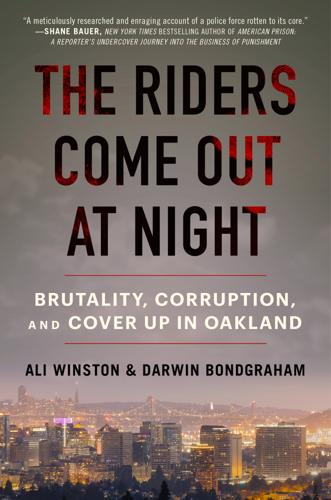
The Riders Come Out at Night: Brutality, Corruption, and Cover-Up in Oakland
by
Ali Winston
and
Darwin Bondgraham
Published 10 Jan 2023
Times Wire Services, “Oakland Mayor’s Son Tied to Alleged Drug Ring,” Los Angeles Times, December 15, 1988, 38. 75. Donald Sutton and Ralph F. Baker, Oakland Crack Task Force: A Portrait of Community Mobilization (Washington, DC: US Department of Education, June 1990), 2. 76. Peter Fimrite, “Oakland Police Close Down Reputed Drug House,” San Francisco Chronicle, May 19, 1992. 77. Peter Fimrite, “Oakland Homeless People Sue Police over Rights,” San Francisco Chronicle, July 8, 1992. 78. Michael Taylor, “What Oakland’s Top Cop Would Do,” San Francisco Chronicle, April 3, 1992. 79. Susanne Espinosa Solis and Henry K. Lee, “Sniper Kills Policeman on I-580,” San Francisco Chronicle, January 11, 1999. 80.
…
He’d been offered a healing future by its harm-reduction nonprofits, but also sucked into San Francisco’s addictive underworld of street drugs. His only prior run-ins with the law included a couple arrests for drug possession and a protest he organized a few years before after San Francisco cops were accused of beating up homeless youth they caught camping in Golden Gate Park. Originally from Virginia, the thirty-one-year-old suffered from mental illness. From an early age, he self-medicated with Adderall, a habit that grew into heroin and other drugs in his late teens. His working-class family couldn’t afford drug treatment programs, and Pawlik’s life spiraled downward for a number of years as his psychological issues intensified into a diagnosed form of schizoaffective disorder.
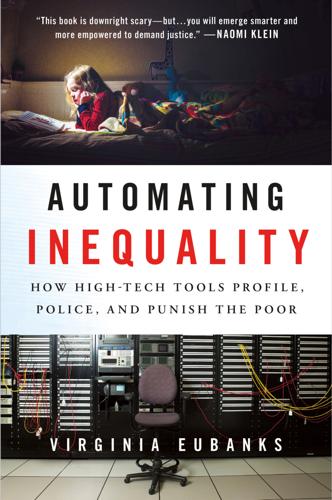
Automating Inequality
by
Virginia Eubanks
Street Meeting: Multiethnic Neighborhoods in Early Twentieth-Century Los Angeles. Oakland, CA: University of California Press, 2005. Willse, Craig. The Value of Homelessness: Managing Surplus Life in the United States. Minneapolis: University of Minnesota Press, 2015. Wolch, Jennifer, and Michael J. Dear. Malign Neglect: Homelessness in an American City. San Francisco: Jossey-Bass Publishers, 1993. Documents My understanding of Los Angeles was enlarged by several fascinating research trips to the Central Branch of the Los Angeles Library and I am grateful for the help of its talented and enthusiastic research librarians. I relied especially on their historical newspaper archives and their government documents collection, which holds copies of the legendary “Centropolis” and Silver Book plans for downtown Los Angeles development.
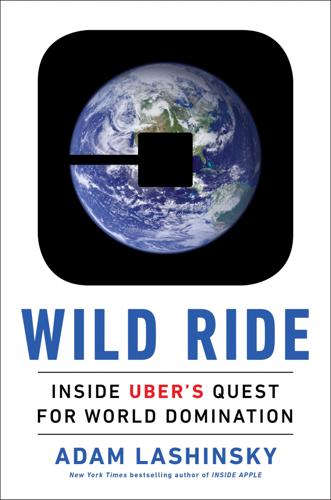
Wild Ride: Inside Uber's Quest for World Domination
by
Adam Lashinsky
Published 31 Mar 2017
I learn over time that this is partly how Kalanick amuses himself and partly a reflection of his earnest side. He’s a seeker, a dreamer. If he’s moved by the plight of the Cambodian people under the murderous Khmer Rouge or by the slum dwellers of Mumbai, he hasn’t done anything about the homeless in his own city of San Francisco. His ideas are thrilling but also baffling, and he relishes challenges to his flights of fancy. I’m reminded of his pitch to me for a new kind of media company, in which companies commission journalists to write stories while reserving full veto power. We argued vehemently about it.
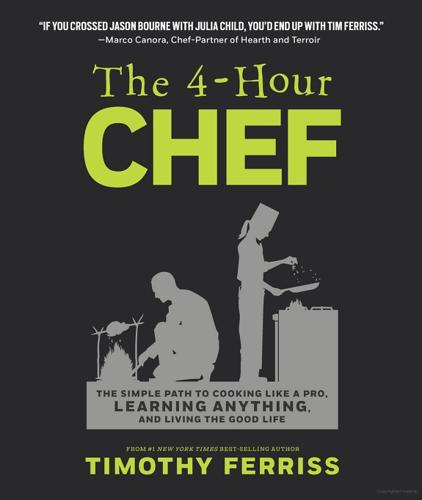
The 4-Hour Chef: The Simple Path to Cooking Like a Pro, Learning Anything, and Living the Good Life
by
Timothy Ferriss
Published 1 Jan 2012
This meant I needed to answer the question: “How likely am I to get sick from eating city pigeons?” THE OFFICIAL CHANNELS In a conversation with a wonderful team at UC Davis, I provided the context: I wanted to determine the toxic loads of pigeons that might be consumed by homeless people in San Francisco. This wasn’t complete fiction. I’d taken daylong homeless tours of the Tenderloin through vayable.com, and though most homeless people know where to get food from shelters, pigeons weren’t out of the question. The call with the UC Davis team centered on potential study design: We could do a full necropsy (studying the entire bird for parasitology, bacterial load, and more) or simply analyze the livers.
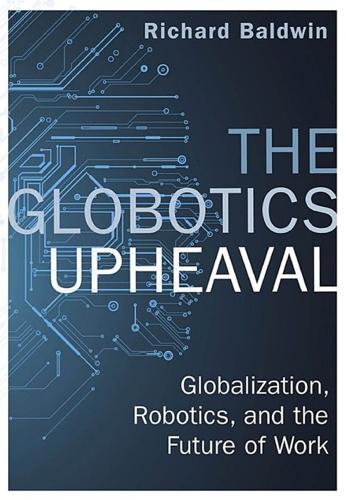
The Globotics Upheaval: Globalisation, Robotics and the Future of Work
by
Richard Baldwin
Published 10 Jan 2019
One Californian company, Knightscope, leverages the mismatch by providing robot security guards who can do the “being there” part while staying continuously in touch with real human security guards who can take over if a real incident occurs. Knightscope guards are already used in malls and out on the streets of San Francisco, where it chases away homeless people. It has cameras, laser scanners, a microphone, and a speaker. It can drive itself around at a slow walking pace. It is not a good as a human security guard, but it is a whole lot cheaper, renting out at seven dollars an hour (below minimum wage). And it doesn’t need breaks or overtime on holidays.
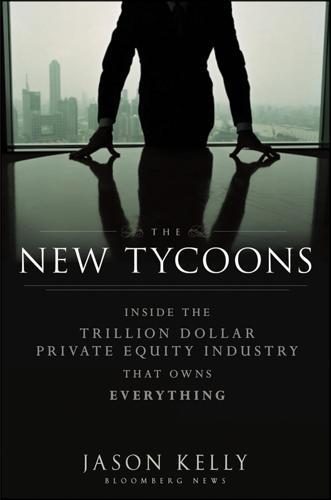
The New Tycoons: Inside the Trillion Dollar Private Equity Industry That Owns Everything
by
Jason Kelly
Published 10 Sep 2012
His own entrepreneurial streak led to the creation of the Roberts Enterprise Development Fund, a “venture philanthropy organization,” according to its website.3 In 1990, Roberts was among the first to try to apply private-sector metrics to the world of non-profits and philanthropy. “I was looking to do something that that if we didn’t do it, it wouldn’t get done.” He hired a consultant to study homelessness, a pressing issue in San Francisco, where the mild climate and relatively liberal values have led to a high homeless population. The first effort, to financially support homeless women who’d been the victims of domestic abuse, was, Roberts said, “a total failure” because the women often went back to their abusers once they had a little bit of money.
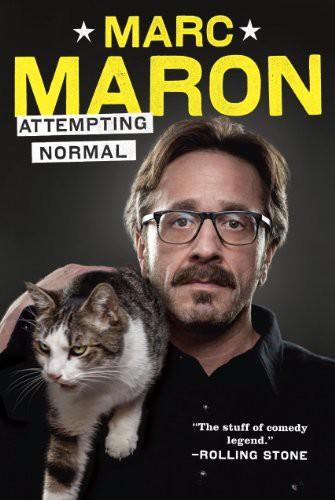
Attempting Normal
by
Marc Maron
Published 28 Apr 2013
This is the sort of thing that happens in mind. In my mind, I transcend simple goodness and reach for the beatific. In my mind, I’m very busy with my good works. Not complaining, just busy. But what about real life? How am I measuring up? I was recently walking down the street in San Francisco and I saw dozens of homeless people. I started to judge them. Who am I going to give money to? Limb missing? You get a dollar. Crack-head or drunk? A quarter. I won’t necessarily deny anyone, but I will judge their need based on my own moral compass. I have no consistent policy in place, aside from always giving people with missing limbs money.
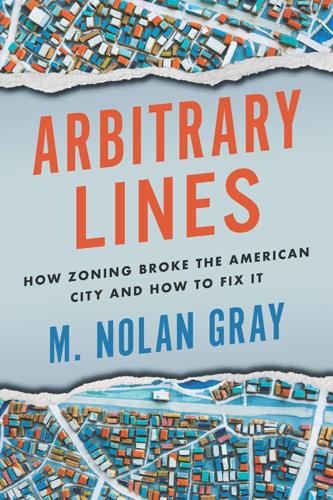
Arbitrary Lines: How Zoning Broke the American City and How to Fix It
by
M. Nolan Gray
Published 20 Jun 2022
Beyond merely failing to achieve its stated goals, the arbitrary lines that zoning imposes on our built landscape have deformed the American city. In cities like New York and Los Angeles, zoning has blocked new housing construction, perpetuating a housing shortage that has shoved millions of people into precarious financial situations, unsustainable commutes, and, in extreme cases, homelessness. In cities like Boston and San Francisco, zoning has locked American workers out of those places where they could contribute the most to our country, leaving us all poorer as a result. In cities like Milwaukee and Birmingham, zoning has institutionalized patterns of racial and class segregation and discrimination, preserving one of our nation’s ugliest inheritances.
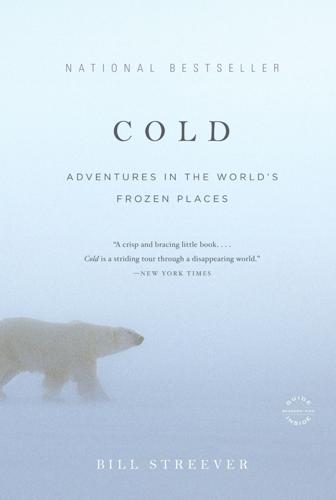
Cold: Adventures in the World's Frozen Places
by
Bill Streever
Published 21 Jul 2009
Summer days in San Francisco can be as cold as winter days, but fog and wind conspire to turn certain summer days into blustery baths of chilled mist that permeates the marrow. None of this is to say that winter temperatures themselves cannot drop in San Francisco. Three months ago, in January, a winter cold snap resulted in temperatures below freezing, and just inland thermometers flirted with the twenty-degree mark. San Francisco’s shelters filled with homeless people. Stephanie Schaaf, a spokes-woman for shelter operators, was quoted in the San Francisco Chronicle: “Yesterday we took in over 500 people, and usually our shelters are pretty full anyway, with maybe 275. We’re breaking out mats, spreading them across the floors, in the hallways, pretty much anywhere there’s open space.”
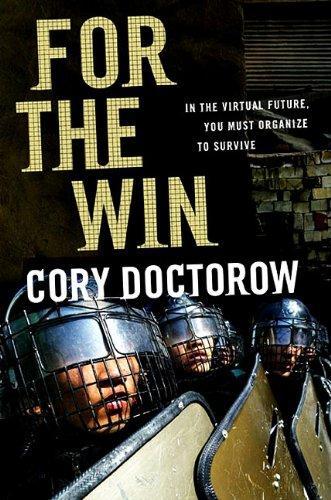
For the Win
by
Cory Doctorow
Published 11 May 2010
She packed up her laptop and stepped out into the parking lot. Across the freeway, she could make out the bones of the Great America fun-park roller-coasters whipping around and around in the warm California sun. These little tech-hamlets down the 101 were deceptively utopian. All the homeless people were miles north on the streets of San Francisco, where pedestrian marks for panhandling could be had, where the crack was sold on corners instead of out of the trunks of fresh-faced, friendly coke-dealers’ cars. Down here it was giant malls, purpose-built dot-com buildings, and the occasional fun-park. Palo Alto was a university-town theme-park, provided you steered clear of the wrong side of the tracks, the East Palo Alto slums that were practically shanties.
…
Her naked arms and legs were badly tracked out, and Suzanne had a horrified realization that among the stains on her tank-top were a pair of spreading pools of breast milk, dampening old white, crusted patches over her sagging breasts. “For my baby. A dollar would help, a dollar.” There were homeless like this in San Francisco, too. In San Jose as well, she supposed, but she didn’t know where they hid. But something about this woman, cracked out and tracked out, it freaked her out. She dug into her purse and got out a five dollar bill and handed it to the homeless woman. The woman smiled a snaggletoothed stumpy grin and reached for it, then, abruptly, grabbed hold of Suzanne’s wrist.
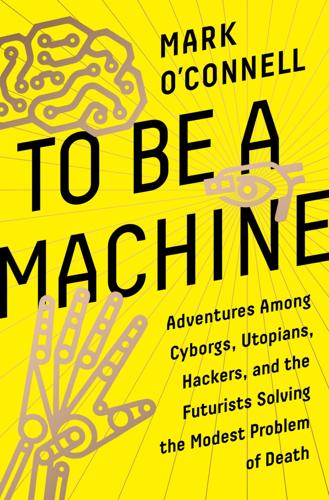
To Be a Machine: Adventures Among Cyborgs, Utopians, Hackers, and the Futurists Solving the Modest Problem of Death
by
Mark O'Connell
Published 28 Feb 2017
I felt that I was catching a glimpse of the absurdity that lay beneath everything we thought of as the world—beneath reason, and science, and the idea of human progress. Everything seemed suddenly, giddyingly revealed as bizarre and self-evidently preposterous: the scientist talking about liberating men and women from the captivity of flesh, the malfunctioning mechanism of the homeless man in a heap on a San Francisco sidewalk muttering his madness and misery into a void, the writer deluding himself with thoughts of seeing into the heart of things, and making a note to write something about the tittering derelict, the smell of weed, Nietzsche’s mad animals. — In the weeks and months after I returned from San Francisco, I thought obsessively about the idea of whole brain emulation.

A Paradise Built in Hell: Extraordinary Communities That Arise in Disaster
by
Rebecca Solnit
Published 31 Aug 2010
Or they destroyed much of the city made of architecture and property, even as they claimed to defend it from fire and from the public that was portrayed, over and over, as a potential or actual mob or bunch of thieves. The citizens responded differently to the occasion as they took care of each other and reinforced the society that each city is first and foremost. The writer Mary Austin, who was there for the earthquake and its aftermath, said that the people of San Francisco became houseless, but not homeless, “for it comes to this with the bulk of San Franciscans, that they discovered the place and the spirit to be home rather than the walls and the furnishings. No matter how the insurance totals foot up, what landmarks, what treasures of art are evanished, San Francisco, our San Francisco is all there yet.
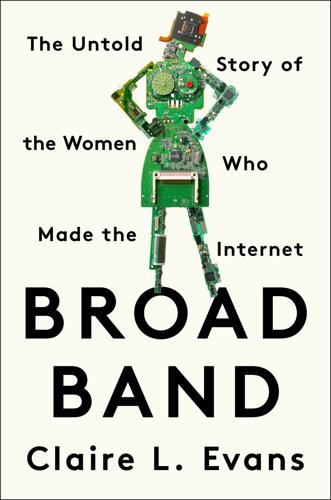
Broad Band: The Untold Story of the Women Who Made the Internet
by
Claire L. Evans
Published 6 Mar 2018
Joan had found her way to Project One after a stranger in a Santa Barbara health-food restaurant told her to knock on the warehouse window when she got to San Francisco and say “Jeremiah Skye sent you.” She took the directory gig because it married her love of electronics with progressive action. Like Sherry, she spent her days on the phone: checking in on San Francisco’s social workers, suicide-prevention hotlines, homeless shelters, senior centers, community groups, and Switchboards. “It really felt to me like putting the tools to exactly what they were meant to be used for, to serve the needs of people,” she tells me, a cat perched on her shoulder, when I reach her over Skype. “They figured out a way to put technology to use in a way that really touched people’s lives, and that just seemed completely appropriate and cool.”
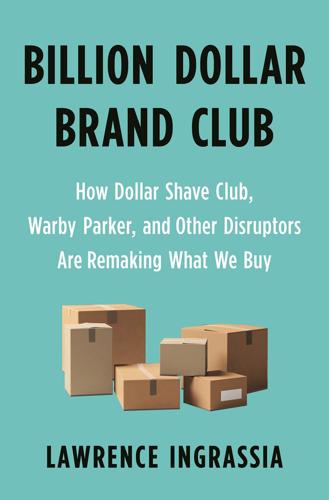
Billion Dollar Brand Club: How Dollar Shave Club, Warby Parker, and Other Disruptors Are Remaking What We Buy
by
Lawrence Ingrassia
Published 28 Jan 2020
Green and her team of a half dozen colleagues sift through all of them. About 1 in 10, perhaps 200 to 250 a year, get invited to present their ideas to Green in person. Like pilgrims heading to Mecca, the entrepreneurs trek to Forerunner’s office just south of downtown San Francisco’s Tenderloin district, passing or stepping over homeless people on the way. In the hour or so they are allotted to persuade Forerunner that they are worthy of an investment, the would-be entrepreneurs are grilled by Green or one of her partners about everything from the competitive landscape for their product to its financial potential to their strategic vision.

We're Not Broken: Changing the Autism Conversation
by
Eric Garcia
Published 2 Aug 2021
Like Aria, Gardiner dropped out of a small Christian liberal arts college after experiencing what he said were instances of racism and a lack of understanding about disability. Gardiner, who is both queer and transgender, was also estranged from his parents, which led to struggles with homelessness and poverty. But when he moved to San Francisco, he found a transitional living program for runaway youth that helped with education and employment. “I had things like check-ins, and they would support students with things like books and registering for classes. That support was both from them and professors who were incredibly dedicated to making sure I got through,” Gardiner recalled.

The Deficit Myth: Modern Monetary Theory and the Birth of the People's Economy
by
Stephanie Kelton
Published 8 Jun 2020
They never do anything for us anyway.”73 Drive around many major cities and you’ll see struggling neighborhoods with people barely scraping by, rundown buildings, an absence of grocery stores, and so on. Travel a short distance and you might enter a neighborhood with multimillion-dollar homes or swanky apartments with uniformed doormen, its inhabitants living a completely different kind of life. Homeless people line the streets of New York, San Francisco, and LA, on blocks where the bars and restaurants roar with money. Professional athletes sign multimillion-dollar contracts; every tweak and twinge in their bodies is instantly attended to by top specialists, while millions of Americans cannot afford even basic health insurance.
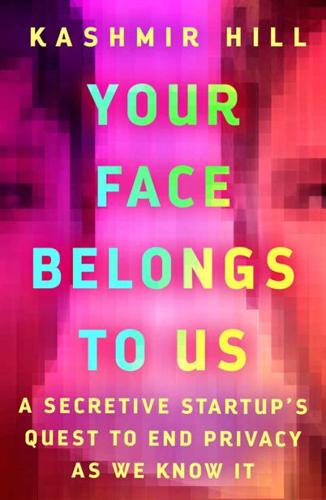
Your Face Belongs to Us: A Secretive Startup's Quest to End Privacy as We Know It
by
Kashmir Hill
Published 19 Sep 2023
That, combined with gentrification in the area, transformed it into the place Schwartz had envisioned, where residents sunbathed, families brought their kids to play, and a young lost soul in a MAGA hat could serenade his friends. Ton-That asked him why he didn’t move to San Francisco—the liberal-leaning tech mecca had rampant homelessness—and fix that place up. Schwartz laughed. “No way,” he said. “I am never going there.” Ton-That told Schwartz he loved building, too, but in the virtual world, spinning his ideas into computer programs. Schwartz listened, intrigued, but thought that Ton-That needed help to dream bigger.

Palo Alto: A History of California, Capitalism, and the World
by
Malcolm Harris
Published 14 Feb 2023
It Was Impossible,” Gizmodo, January 22, 2019, https://gizmodo.com/i-tried-to-block-amazon-from-my-life-it-was-impossible-1830565336. 24. Sam Levin, “‘We Have Failed’: How California’s Homelessness Catastrophe Is Worsening,” Guardian, March 22, 2022. 25. See, for example, Julia Carrie Wong, “Wealthy San Francisco Tech Investors Bankroll Bid to Ban Homeless Camps,” Guardian, October 12, 2016. 26. Mike Males, “San Francisco’s ‘Crime Wave’ Is Just One Crime,” Center on Juvenile and Criminal Justice, January 16, 2020. 27. Wong, “Wealthy San Francisco Tech Investors.” 28. “Twitter Tax Break Approved by San Francisco Supervisors,” San Francisco Examiner, April 5, 2011. 29.

The Best Business Writing 2013
by
Dean Starkman
Published 1 Jan 2013
Kennan is thirty-four and quite short, with a long biker beard, a silver fleck of a nose stud and, almost always, a Wildhorse cigarette in one hand. Edgy energy keeps him in motion; he describes himself as “a very overanalytical individual.” Desperate to get his kids out of a homeless shelter after he lost his job in San Francisco, Kennan heard about the Safe Parking program from a friend. He saved his cash assistance for two and a half months and used the $700 to buy the RV then waited two weeks until the rest of his welfare money came in to get it registered. “I basically plunged all the funds I had into the vehicle and then coped with just food stamps,” he says.

MONEY Master the Game: 7 Simple Steps to Financial Freedom
by
Tony Robbins
Published 18 Nov 2014
In 2013 over 540,000 people attended 100 Maker Faires globally, and in 2014 Maker Media, creator of the faires, is expecting that number to climb to 140 Maker Faires. President Obama recently hosted a Maker Faire at the White House, where a 17-foot robotic giraffe named Russell greeted him, and the president toured a tiny portable house and played a keyboard made of bananas. He also met Marc Roth, from San Francisco, who was living in a homeless shelter when he started going to a local “TechShop” to learn how to use 3-D printers and laser cutters. Sixteen months later he had started his own laser-cutting business, and now runs a program to teach high-tech skills to others who need a fresh start. Obama also gave a shout-out to two tween-age girls from North Carolina who started a robotics company instead of getting a paper route.

Elon Musk
by
Walter Isaacson
Published 11 Sep 2023
Birchall texted a banker at Morgan Stanley, “Call me when you have a minute.” That night, they started work on figuring out a reasonable price for Twitter and how Musk could finance it. In the meantime, Musk continued taking potshots at Twitter. He posted a poll about the company’s San Francisco offices. “Convert Twitter SF HQ to homeless shelter since no one shows up anyway?” he tweeted. Within a day there were 1.5 million votes, more than 91 percent in favor. “Hey—can you speak this evening?” Taylor texted him. “I’ve seen your tweets and feel more urgency about understanding your position.” Musk didn’t answer.

Frommer's San Francisco 2012
by
Matthew Poole
,
Erika Lenkert
and
Kristin Luna
Published 4 Oct 2011
Drawbacks: Not the nicest part of town. Expect panhandlers and take taxis after dark. Moderate The Phoenix Hotel ★★ If you’d like to tell your friends you stayed in the same hotel as David Bowie, Keanu Reeves, Moby, Franz Ferdinand, and Interpol, this is the place to go. On the fringes of San Francisco’s aromatic Tenderloin District (rife with the homeless and addicts), this well-sheltered retro 1950s-style hotel is a gathering place for visiting rock musicians, writers, and filmmakers who crave a dose of Southern California—hence the palm trees and pastel colors. The focal point of the Palm Springs–style hotel is a small, heated outdoor pool adorned with a mural by artist Francis Forlenza and ensconced in a modern sculpture garden.
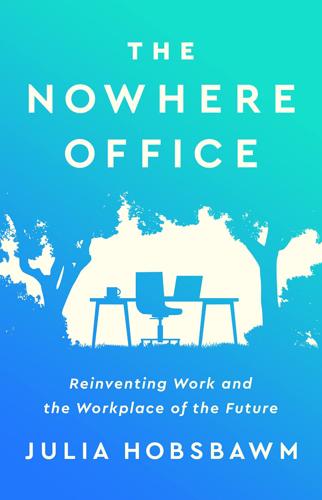
The Nowhere Office: Reinventing Work and the Workplace of the Future
by
Julia Hobsbawm
Published 11 Apr 2022
Ignoring hybrid is not an option, not least because by 2030 the majority of the office-based working community is likely to be freelance in the United States and therefore working flexibly, hybrid and in the Nowhere Office.36 The data is reflected globally: the UK and Brazil are the second and third largest freelance communities with Pakistan, India, Philippines and Bangladesh all seeing sharp rises; most of these freelancers will be digital nomads.37 Sir Martin Sorrell, who founded advertising behemoth WPP and now runs the growing global digital brand Media.Monks, gave me this view of the new working landscape: Apart from the destruction, which was terrible for people personally, all the pandemic did was just speed up change. San Francisco had problems because apartments were too pricey, a lot of homeless people. California was increasing taxes. The mobility to Colorado or Texas or Florida was going to happen anyway. If you think about all the trends, flexible career team, distance working, different floor plates in offices, C-19 caused a massive tsunami around that.

Cogs and Monsters: What Economics Is, and What It Should Be
by
Diane Coyle
Published 11 Oct 2021
The pandemic will certainly halt or even reverse this trend, but for how long we do not know. What’s more, the digital sector itself has created extraordinary wealth concentrated in very few hands. Some commentators have drawn apt comparisons between the 2020s and the Gilded Age of the 1920s, for such are the contrasts. San Francisco symbolises the chasm between rich and poor: a large homeless population in desperate state down the road from millionaires and billionaires, who watch the destitute and addicted through the windows of their Uber or the executive shuttle to Menlo Park or Mountain View (Chan 2017; Solnit 2014). There is now an active policy debate about tackling tech wealth and power, much of it focused on the dominance of digital markets by a small number of giant companies.
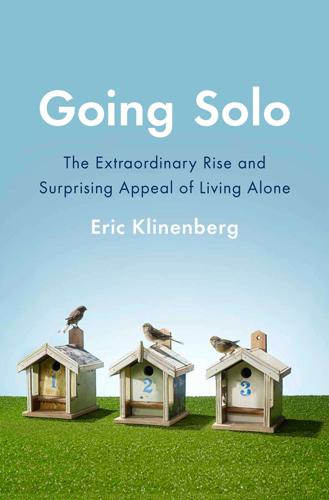
Going Solo: The Extraordinary Rise and Surprising Appeal of Living Alone
by
Eric Klinenberg
Published 1 Jan 2012
Supportive housing facilities like those built by Common Ground are cost-effective and, as a number of scientific studies have shown, cost-saving ways to help people who are on their own and in trouble; they can even produce benefits for the communities in which they are located. Consider findings published in two top medical journals, Psychiatric Services and JAMA: The Journal of the American Medical Association. One article, an analysis of homeless single adults with psychiatric and substance abuse disorders in San Francisco, reports, “Providing permanent supportive housing . . . reduced their use of costly hospital emergency department and inpatient services, which are publicly provided.” A second, which tracks chronically homeless singles with severe alcohol problems in Seattle, reports that those who were placed in a supportive housing complex—one that allows residents to drink in their rooms and offers a range of voluntary services—cut their consumption of alcohol, their encounters with the criminal justice system, and their use of expensive health services.

Northern California Travel Guide
by
Lonely Planet
In recent years, cities such as San Francisco and Sacramento have seen an uptick of 3%, according to the Department of Housing and Urban Development, and nearly half of the nation's 'unsheltered' homeless are living on the streets of California. With the additional impact of the housing boom and changing demographics of San Francisco, some suggest that the numbers are actually much higher. The sheer visibility of homeless people in Northern California, particularly in San Francisco, is a shock for many visitors. Understanding the causes and demographics of Northern California’s homeless is not easy. Some are teens who have run away or been kicked out by their families, but the largest contingent of homeless Californians are US military veterans.
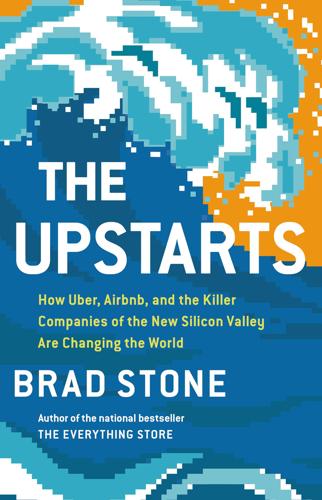
The Upstarts: How Uber, Airbnb, and the Killer Companies of the New Silicon Valley Are Changing the World
by
Brad Stone
Published 30 Jan 2017
In Silicon Valley, this is what passes for getting the last laugh. To the casual observer, the home-rental site Airbnb didn’t seem like it could ride this wave, let alone come to embody it. At the start of the year, its employees were still crowded into the office on Tenth Street in SoMa (the South of Market area in San Francisco), with bad cell phone reception inside and the homeless camping on the street outside. The startup was run almost entirely by its triumvirate of co-founders, who had two college degrees in design and one in computer science among them. Behind the scenes, though, Airbnb was booming. The activities of Nate Blecharczyk, the growth hacker, had cranked the flywheel.
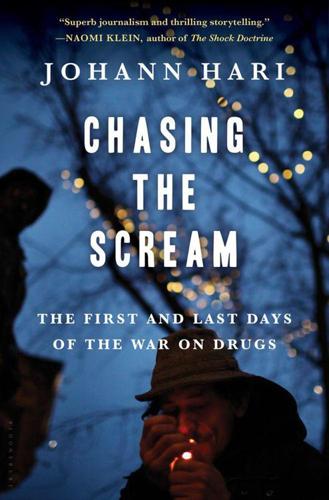
Chasing the Scream: The First and Last Days of the War on Drugs
by
Johann Hari
Published 20 Jan 2015
If this logic had been extended to a few more substances, the drug war graveyard would still be a rolling green field. The day after Christmas in 2013, Billie Holiday’s godson, Bevan Dufty—whom she had suckled, telling his mother with a laugh, “This is my baby, bitch!”—was sitting in a San Francisco clinic. He was in charge of helping the homeless in the city, and he was there to help a heroin addict who was in withdrawal and had just been thrown off his methadone program. The addict turned to Bevan and said he wanted to rip the skin off his body, because he couldn’t bear to be without the drug for one more minute.

American Foundations: An Investigative History
by
Mark Dowie
Published 3 Oct 2009
Although Roberts was unaware of the experiment when he created the Homeless Economic Development Fund, he was not surprised when I described its demise. He distrusts most government initiatives and can see as clearly as anyone who watches large foundations at work that they are as likely to walk away from success as they are to fund a failure. To date Roberts has helped ten nonprofit organizations in the San Francisco Bay Area create twenty-four enterprises designed to move the homeless into the job market. They currently employ about six hundred people. Of the approximately $5 million he and Lianne give away every year, between $3 and $4 million goes to these social projects. What they seek to realize from their grantmaking is a social return on investment (SROI)-a significant and growing number of formerly homeless people who live independent lives.

Wealth and Poverty: A New Edition for the Twenty-First Century
by
George Gilder
Published 30 Apr 1981
With government looming in the bedroom and the male role in procreation relegated to passive irresponsibility, the male is cuckolded by the welfare state. Excesses in food stamps foster obesity, a nation of gastropaths. Free and rent-controlled housing comes to mean an ever-greater incidence of homelessness, thronging and devaluing real estate from the Presidio in San Francisco to Central Park in New York. There are only two ways to manage health care without destroying the system with runaway costs. One is to allow the government to ration care and control every medical expense, reducing the population to medical mendicants and destroying incentives for medical innovation and good health practices.
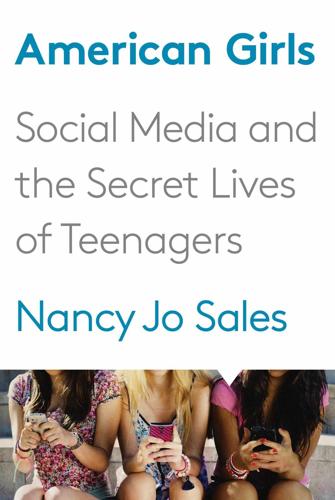
American Girls: Social Media and the Secret Lives of Teenagers
by
Nancy Jo Sales
Published 23 Feb 2016
A grainer was a train car that carried dry goods like grain or sand or clay; it had a ladder going up the side, that was how you climbed up. That was if the bulls, or the rail yard police, didn’t catch you. But she’d gotten pretty good at knowing how to evade them. She had a Crew Change—that was the underground guide of train riders; she’d gotten it off a kid in San Francisco in exchange for beer. She was a traveling kid, a homeless girl, and had been since she was sixteen. The best part about traveling, she said, was the trains. She loved “absolutely everything” about trains, “the noise, the speed, the distances, the way they shake.” The way you could scrunch into the corner of a boxcar with your head on your backpack and listen to the chunk-chunk, chunk-chunk, of the wheels against the rails, lulling you to sleep.